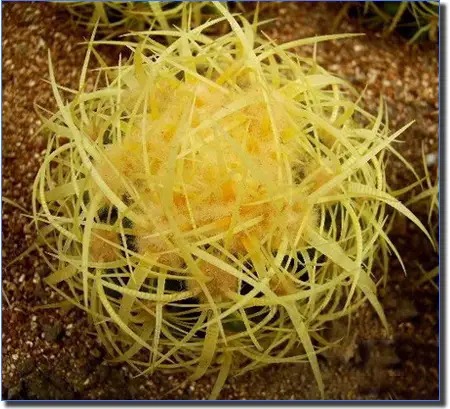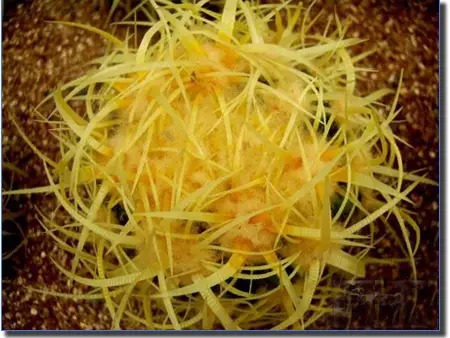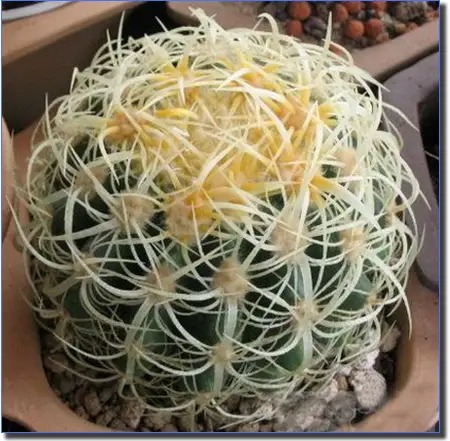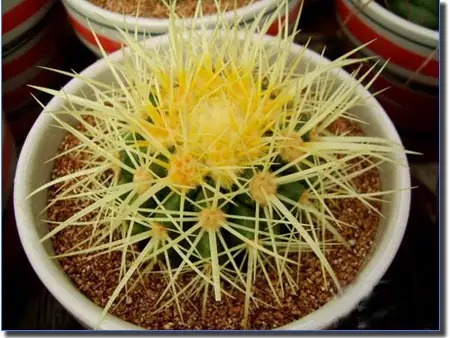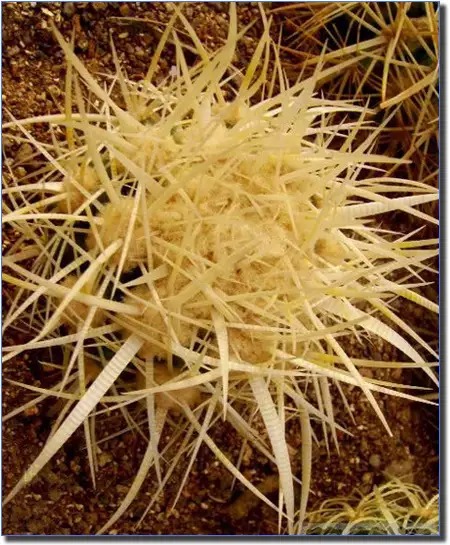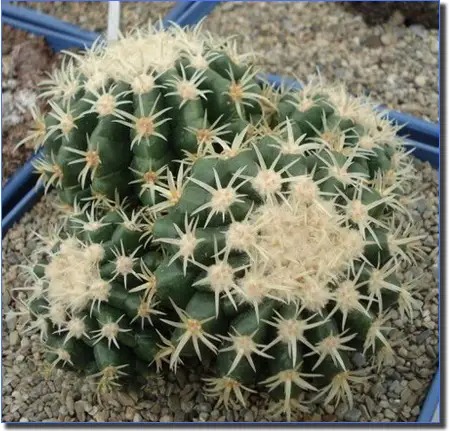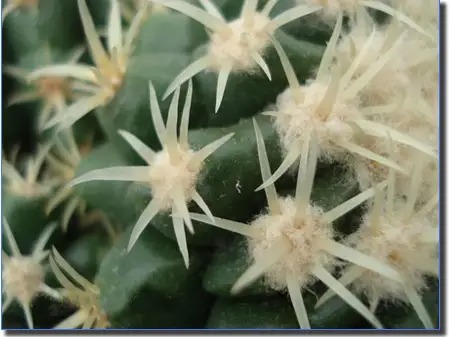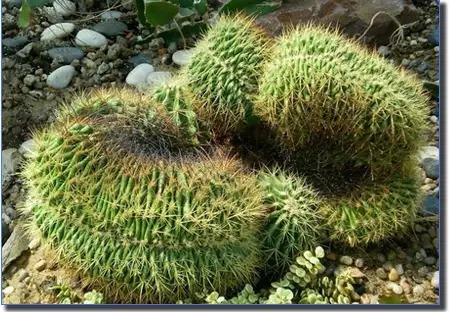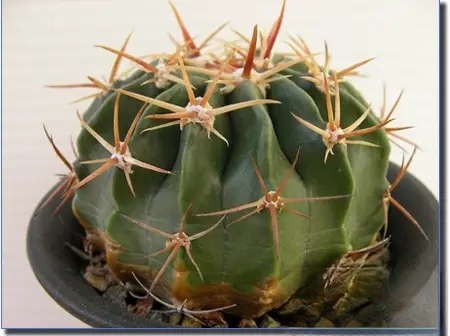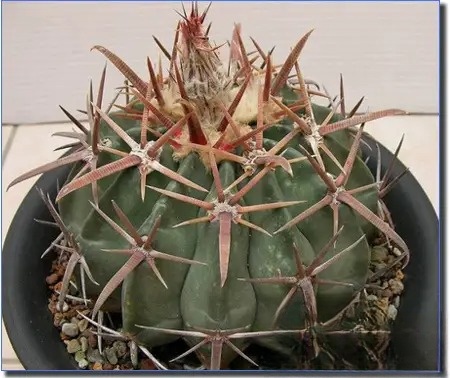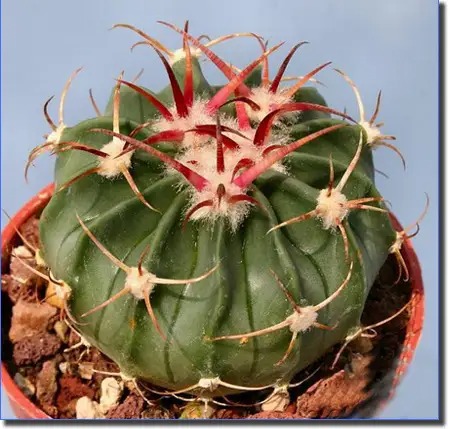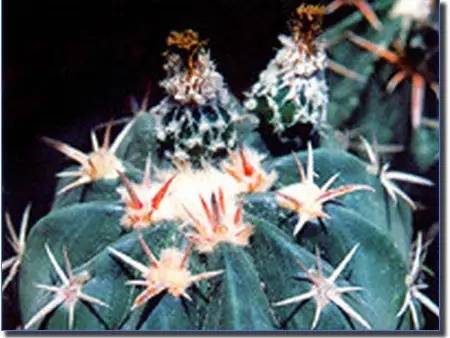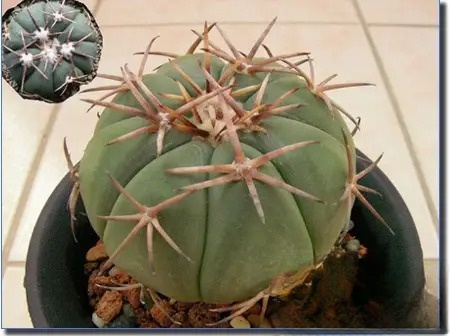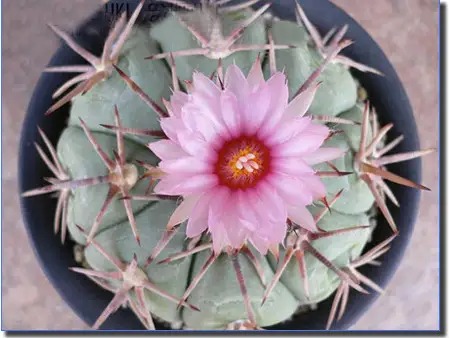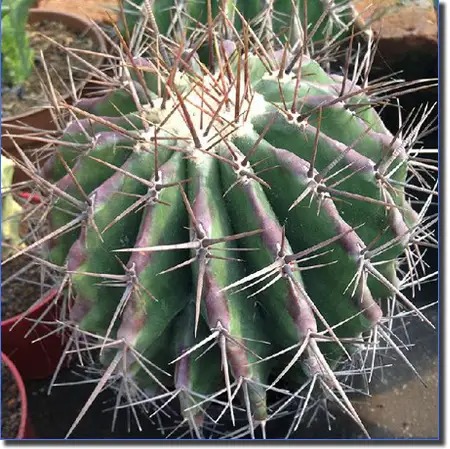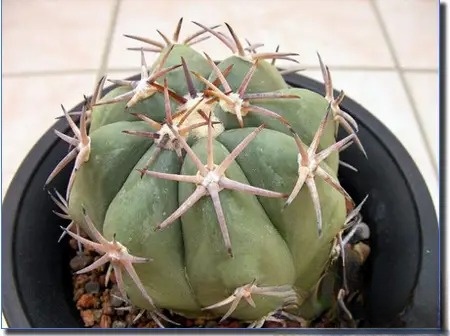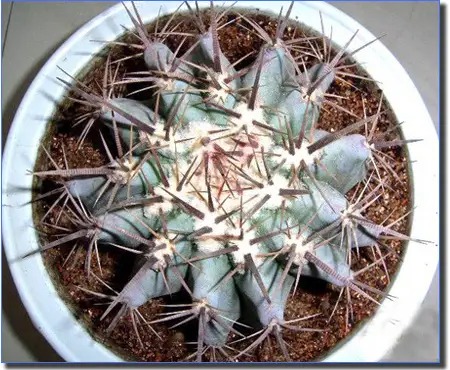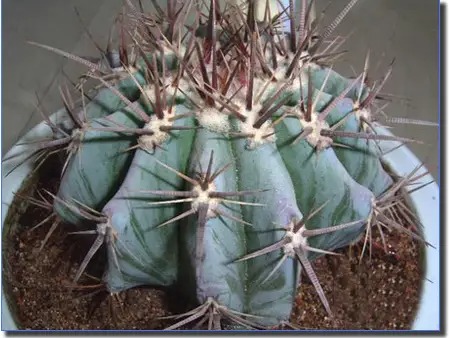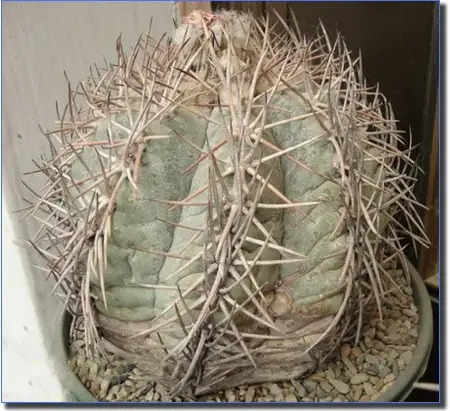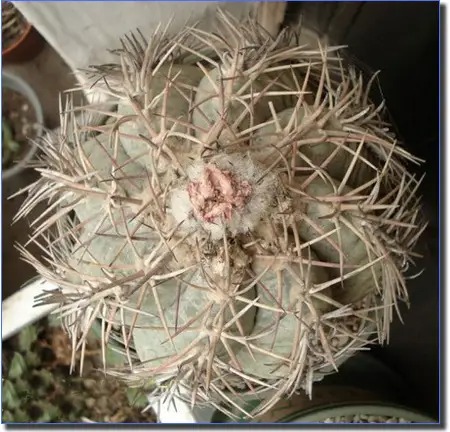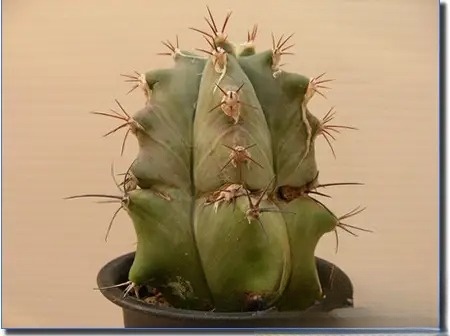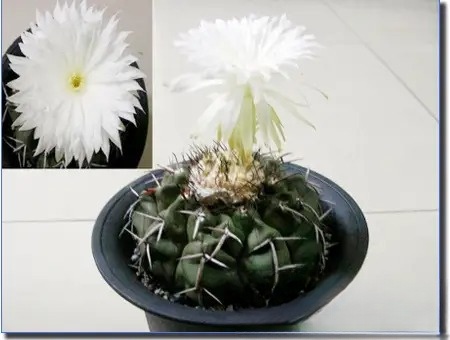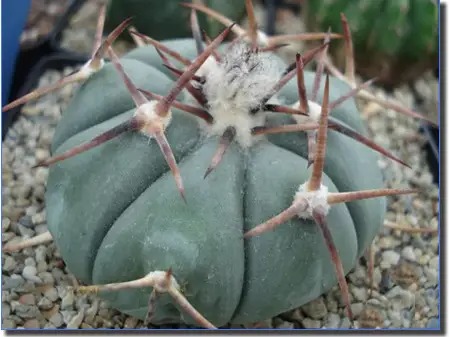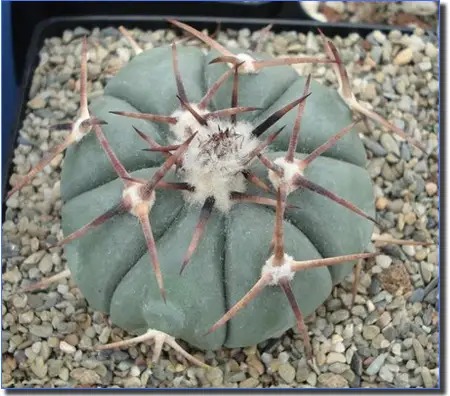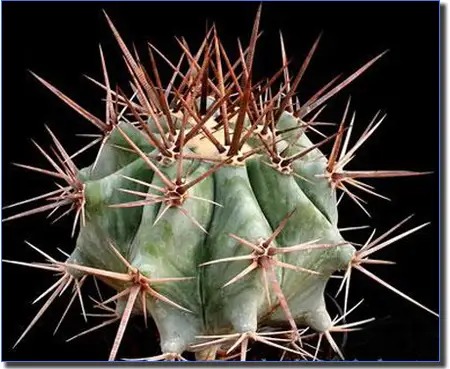Cactaceae plants - (33) Gymnocalyx [Opuntia]
[ Gymnocalycium of the Cactaceae family]
is also known as the genus Gymnocalycium. It is spherical or oblate. It has few ridges, round ridges, and horizontal grooves or bands of different colors between the areoles. The thorns vary in length, but most of them are not brightly colored. The flowers are terminal, and the receptacle is covered with large scales, but without hair and thorns. Except for a few species, the colors are mostly not bright but very elegant.
===============================================================
Flower name: Gymnocalycium mihanovichii var. friedrichii
Aliases: big red ball, red peony, red lantern, horticultural variant. The red peony is a perennial succulent plant of the cactus family. It is flat spherical, 3 to 6 cm in diameter, bright red, and mature spheres will produce clusters of sub-spheres. The red peony has slender flowers, funnel-shaped flower tubes, and blooms in pink or light pink. It blooms in summer, and is pink and delicate, shaped like a peony. The fruit is slender, spindle-shaped, and red. The seeds are dark brown. When the red peony blooms, at least half of the sphere of the plant must be exposed to strong light for a day, so that the buds are easier to bloom. If the red peony is not well cared for, the buds are likely to fall off. The red peony is bright red and quite eye-catching. It is one of the main varieties of cactus plants.
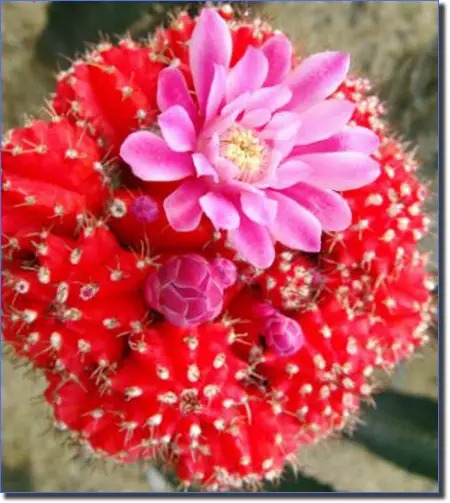
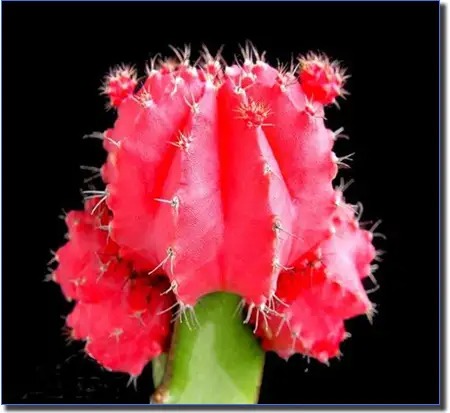 ================================================================
================================================================Flower name: Scarlet Peony Crown
A plant of the genus Gymnocalyx in the family Cactaceae. A horticultural variety. This is a zebra variety of the oldest type of the red peony, the rough red peony. Red, dull, and mixed with purple.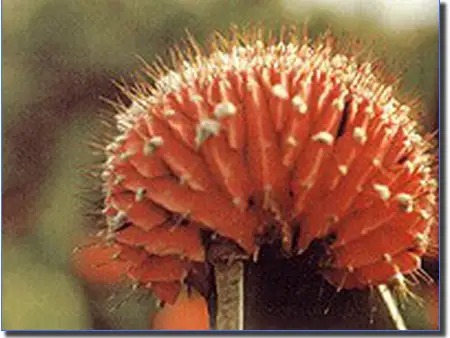 ================================================================
================================================================Flower name: Peony brocade
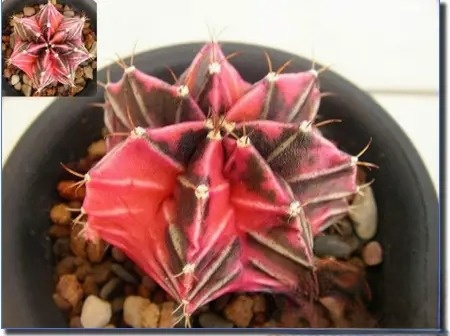 ================================================================
================================================================Flower Name: Peony Jade (Gymnocalycium mihanovichii (Fric ex Gürke) Britton & Rose )
Other name: Ruiyunwan, a plant of the genus Gymnocalyx in the Cactaceae family. Native to Paraguay. Flat ball with neat 8 edges, purple skin. Tiny thorns. Many pink flowers.
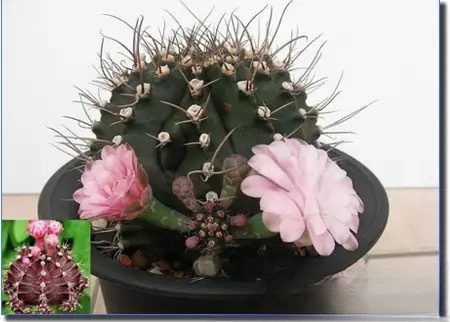
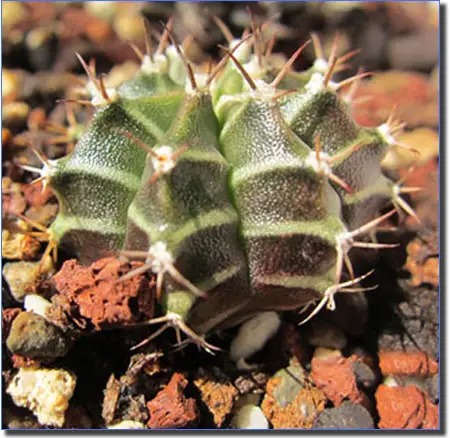
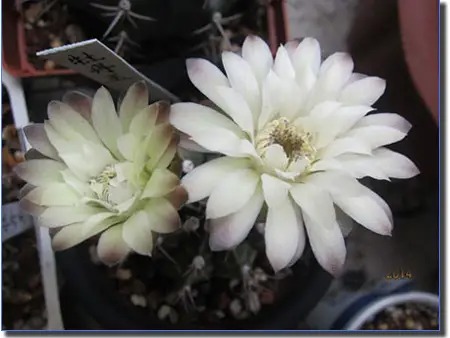 ================================================================
================================================================Flower Name: Red Peony Jade ( Gymnocalyium mihanouichll var .
Other names: Red Peony, Red Ball, Ruiyun Ball. Red Peony Jade is a variant of "Ruiyun" ~ a variegated variant of "Peony Jade". It is a perennial succulent herb with an oblate spherical shape and balls in deep red, orange-red, pink and purple. The flowers are slender and the corolla tube is funnel-shaped. They grow on the areoles near the end and often bloom at the same time. The ball has prominent horizontal ridges. The flowers are light red or pink and bloom in spring and summer. Mature balls produce bulbs in groups. It likes a warm and sunny environment. It is suitable for potted viewing, or placed in a succulent plant garden and as bonsai material.
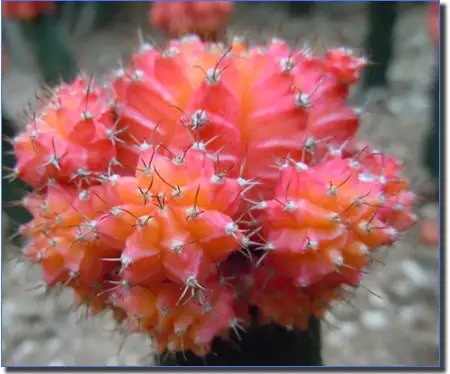
================================================================
Flower name: Peony Jade Crown
A plant of the genus Gymnocalyx in the Cactaceae family. A zebra variety of the peony jade. The plant is cockscomb-shaped and blooms a lot.
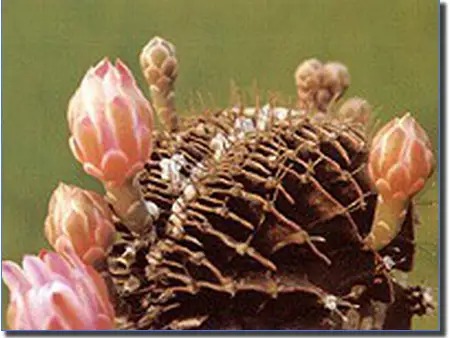 ================================================================
================================================================Flower name: Rouge Peony
A plant of the genus Gymnocalyx in the Cactaceae family. One of the variegated varieties of peony jade. Similar in shape to the original species, but rouge red throughout.
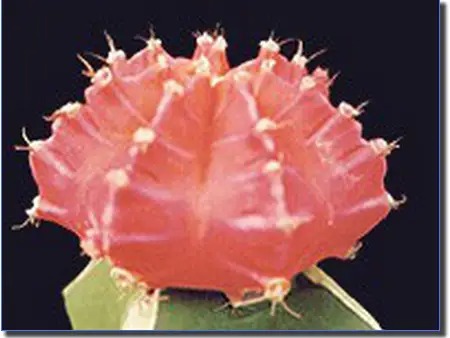 ================================================================
================================================================Flower name: Jade Peony
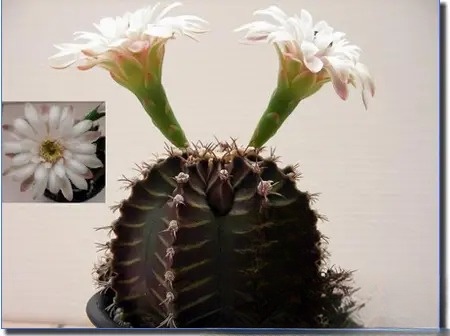 ==================================================================== Flower Name: Dragon and Phoenix Peony
==================================================================== Flower Name: Dragon and Phoenix Peony
A plant of the cactus family. It is a grafted chimera of the red peony and the hylocereus. The plant has a columnar stem like the hylocereus, but with red mixed in the green, called the dragon. The red balls on its areoles are called the phoenix.
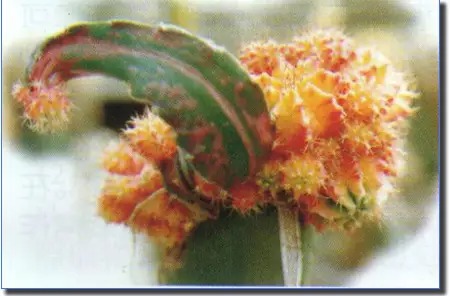 ================================================================
================================================================Flower Name : Gymnocalycium mihanovichii
Origin: Arid areas of Paraguay. Appearance: The plant is small spherical, young plants grow solitary, old plants tend to grow in groups, ball diameter 4-5 cm, body color gray-green to purple-brown. With 8-12 broad ridges. There is a protrusion called "jaw" under the areole; 5-6 gray-yellow radial spines. When the light is too strong, the surface is reddish brown, when it is too weak, it is green and the ball grows taller, and when it is green at the growth point and the outer edge is slightly reddish brown, it means that the light is moderate, and it can bloom many times a year. Flowers: From spring to early summer, pink funnel-shaped flowers bloom on the areole near the center of the sphere, with a flower diameter of 3-4 cm.
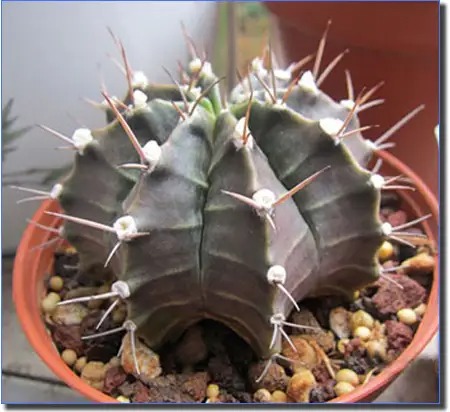
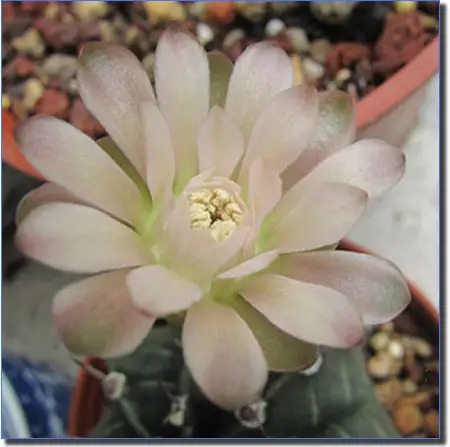 ================================================================
================================================================Flower name: Lucky Cloud Ball
Origin: It is a variant of the End Cloud Ball, native to Paraguay. Appearance: The plant is oblate, with a ball diameter of 6-8 cm and a dark green body color. It has 7-12 tubercles on the ridges, and the ridge walls have obvious light-colored transverse ribs. There are 5-6 circumferential spines, without a central spine; new spines are brown, and old spines are gray-brown. Flowers: In spring and summer, light peach-colored flowers are produced on the top, with a flower diameter of 3.5-4 cm.
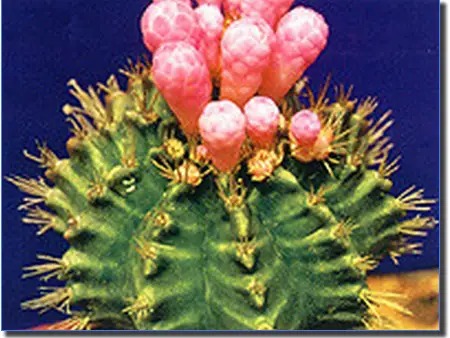 ================================================================
================================================================Flower name: White spider
Origin: It is a spiny variant of Luoxing, native to northern Argentina. Appearance: Initially small spherical, then short cylindrical, easy to produce young balls in groups, dark green in color. With 12-15 small warty protruding edges. 20-25 bristle-like white fine thorns. Flowers: In late spring and early summer, the terminal lavender peach funnel-shaped flowers are produced, with a flower diameter of 3-3.5 cm. Cultivation: This genus has a strong habit and is easy to cultivate. It likes fertile and well-drained culture soil. In addition to sufficient sunlight during cultivation, it is advisable to provide appropriate shade and maintain good ventilation in summer. In winter, keep the potting soil slightly dry and exposed to more sunlight. It can withstand low temperatures of 5-7°C.
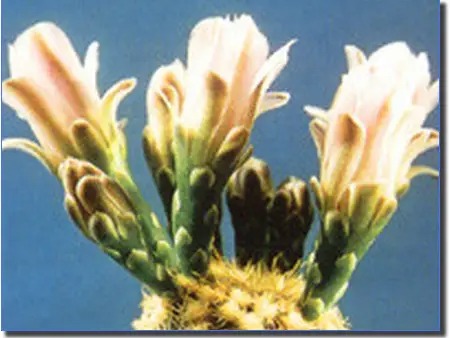 ================================================================
================================================================
Flower name: Tsuchigumo
A plant of the genus Gymnocalyx in the Cactaceae family. Native to Argentina. A variant of the genus Gymnocalyx. The sphere is larger and more oblate. There are about 20 ribs. The thorns are needle-shaped, white, with red base. The flowers are white.
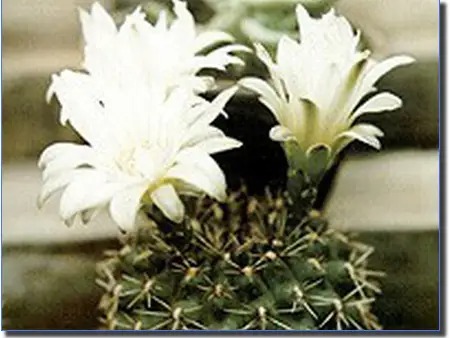 ================================================================
================================================================Flower name: Dragon head
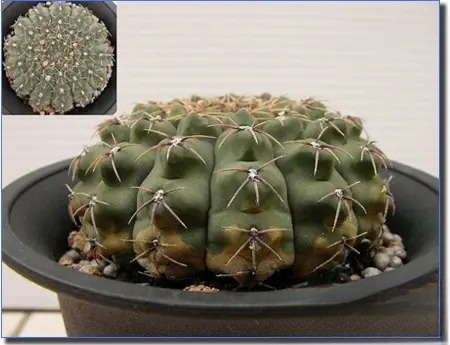 ================================================================
================================================================
Flower name: Dragon head crown
A plant of the genus Gymnocalyx in the Cactaceae family. It is a dragon head variety with a banded shape. It looks like a cockscomb, with short thorns and a dull skin.
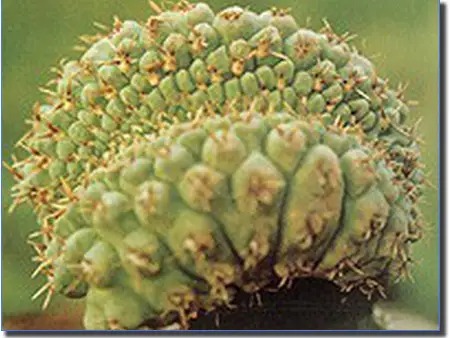 ================================================================
================================================================
Flower name: Monster Dragon Ball
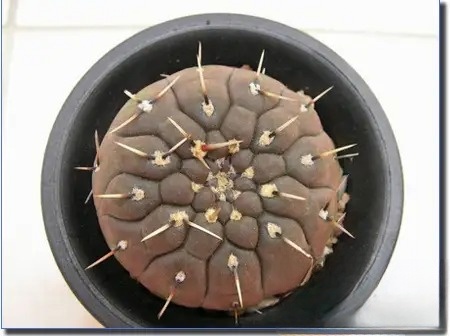
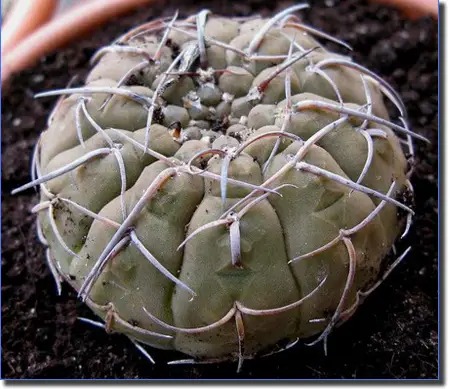
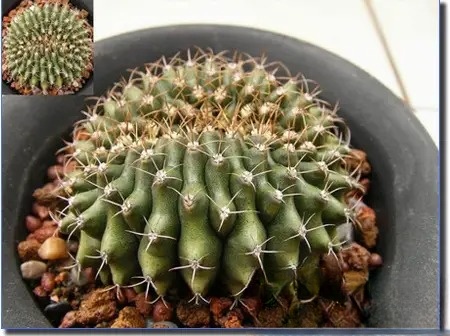 ================================================================
================================================================
Flower name: Crown of Green
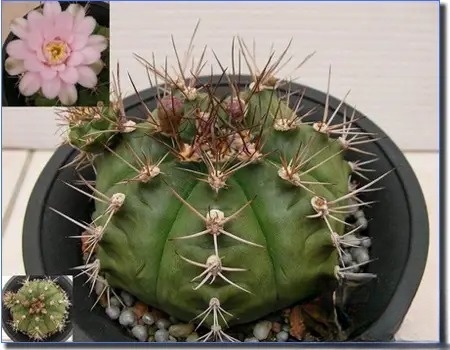 ================================================================
================================================================Flower name: Cuihuangjin
A plant of the genus Gymnocalyx in the Cactaceae family. It is a variegated variety of the Emerald Crown. It is spherical, with distinct edges and needle-like thorns. It is yellow throughout, with green around the growing point.
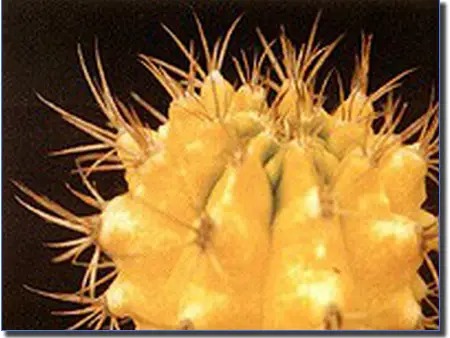 ================================================================
================================================================Flower name: Polyanthus floridula
Origin: Brazil and Paraguay. Appearance: oblate to spherical, 10-12 cm in diameter, gray-green in color. With 10-15 low warty protruding ridges. 5-7 thorns around, curved toward the sphere; new thorns are yellow, old thorns are gray-brown. Flowers: Light peach-colored funnel-shaped flowers are produced at the top in spring and summer, 7-8 cm in diameter.
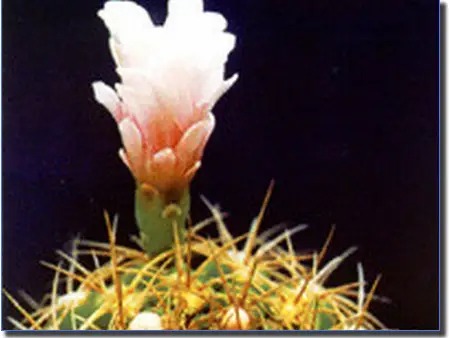 ================================================================
================================================================Flower Name: Gymnocalycium baldianum Speg
Other name: Scarlet cactus, a plant of the genus Gymnocalyx in the Cactaceae family. Native to Argentina. Oblate in shape. Full and neat ridges, dark green skin. Needle-like thorns white with slightly red tips. Deep red flowers.
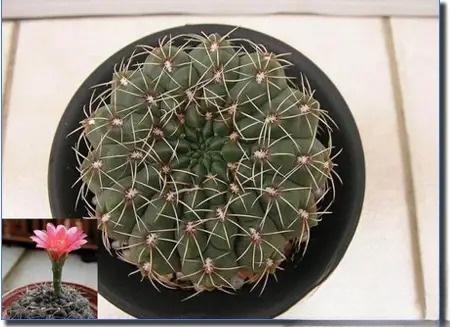
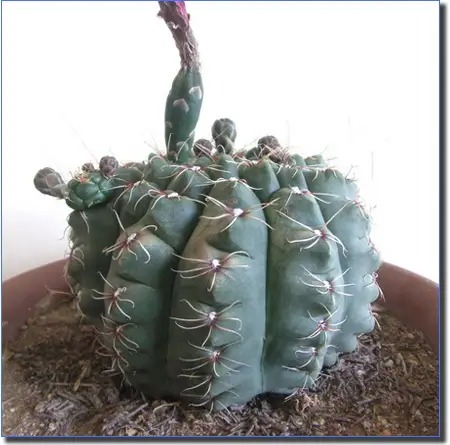
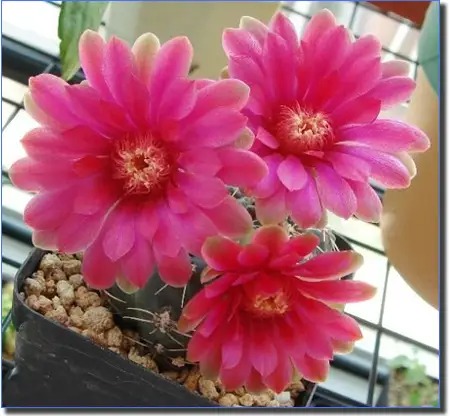 ================================================================
================================================================Flower Name: Gymnocalycium bodenbenderianum (Hosseus ex A.Berger)
Origin: Southern Argentina. Alias: Black Butterfly King. Appearance: Solitary plant, oblate to spherical, 6-8 cm in diameter, gray-green in color. With 8-11 low round tubercles. 3-5 radial short spines; new spines are reddish brown, old spines are gray-brown. Flowers: Funnel-shaped white flowers with light reddish brown midribs are produced at the top in late spring and early summer, with a diameter of 4.5-5 cm .
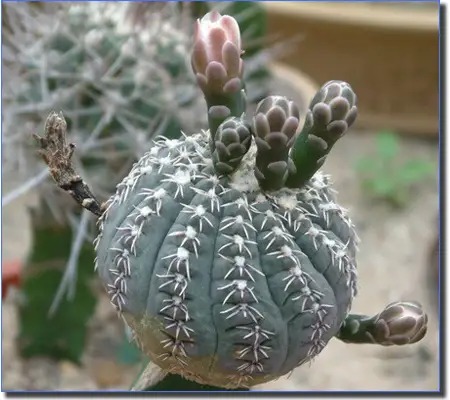 ================================================================
================================================================Flower name: Guanglinyu
Origin: Southern Bolivia mountainous area. Appearance: Solitary plant, oblate to spherical, ball diameter 16-18 cm, body color bluish gray-green, with 9-13 low warty protruding ridges. 4-6 radial thorns, curved and intertwined, close to the ball; new thorns are brown, with light yellow at the base, and old thorns are gray-brown. Flowers: Pale peach bell-shaped flowers bloom near the center of the ball in late spring and early summer, with a flower diameter of 4-5 cm.
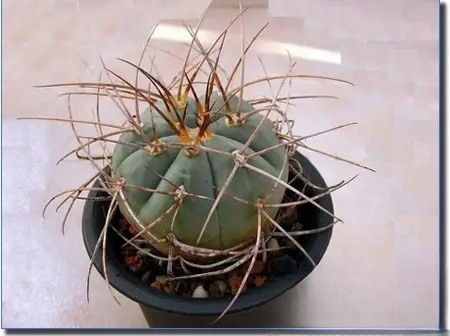
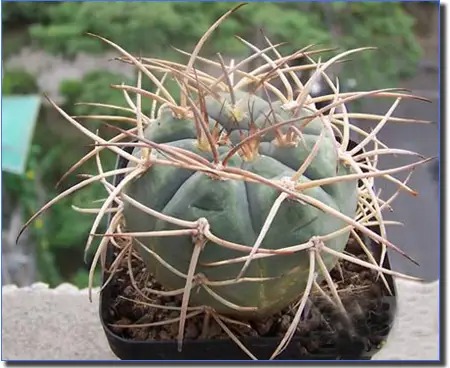 ================================================================
================================================================Flower name: Luoxingqiu
A plant of the genus Gymnocalyx in the Cactaceae family. Native to Argentina. Small, gregarious plant. Thorns are fine and dense, off-white. The flower tube is very long and light pink .
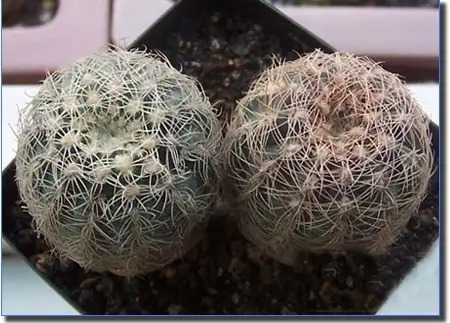
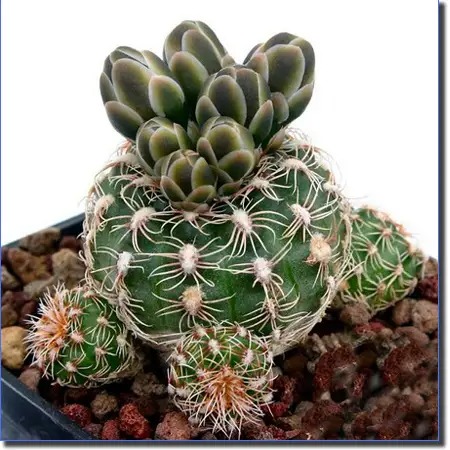
 ================================================================
================================================================Flower name: Magic Dragon
Origin: Mountain slopes in northern Argentina. Morphology: Solitary plant, oblate to spherical, 10-12 cm in diameter, gray-green in color. With 10-12 round warty ridges. 5-7 cone-shaped circumferential spines; 1 central spine; new ones are peach brown, old ones are gray-brown. Flowers: Pale peach bell-shaped flowers bloom near the center of the top of the ball in late spring and early summer, with a diameter of 3.5-4 cm.
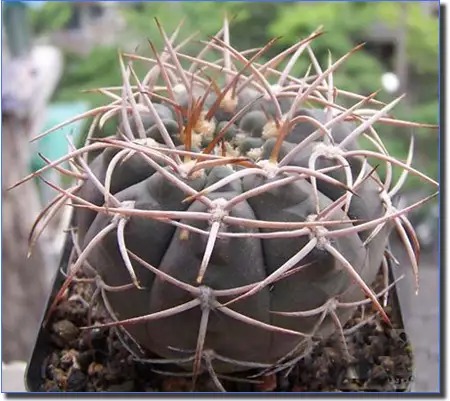
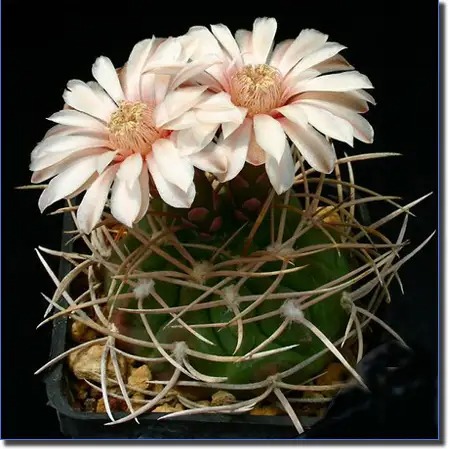 ================================================================
================================================================Flower Name: Gymnocalycium denudarum
The sea ball is a perennial fleshy herb with a flat ball, about 10 to 15 cm high, with curled thorns attached to the surface of the ball, and white or pink flowers. The flowering period is from spring to early summer, and the fruiting period is from summer to autumn. It likes loose, well-drained sandy loam.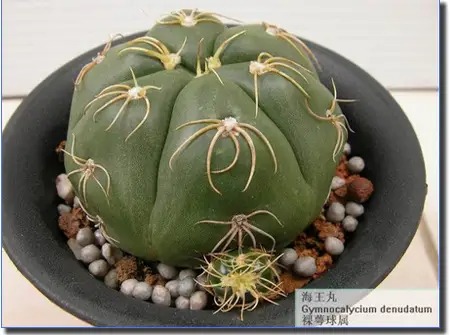
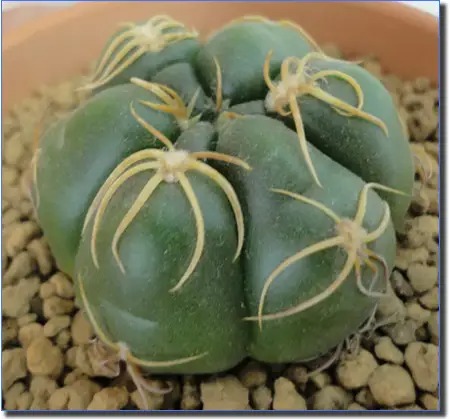
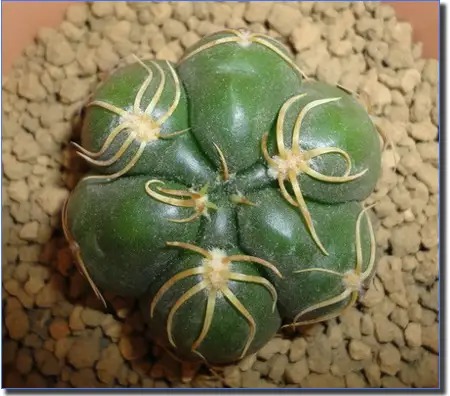
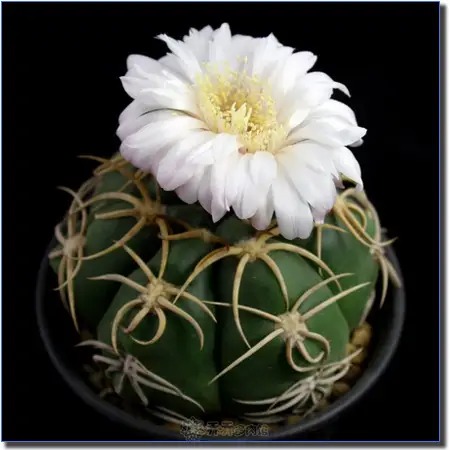 ================================================================
================================================================Flower Name: Gymnocalycium denudarum
Tsukahara Sea King is a variety cultivated by the Japanese Tsukahara family. It is very classic and beautiful. Tsukahara Sea King is spherical or oblate. The number of edges is 5 to 7. There are deep horizontal grooves between the areoles. The thorns are of different lengths and curled very strongly. The thorns are relatively curly and rough. The selection of Tsukahara Sea King is to select the curly and rough thorns. Tsukahara Sea King likes sunlight, the flowers are terminal, the receptacle is attached with large scales, but there are no hairs and thorns. Tsukahara Sea King flowers are white with a little light green. When flowering, at least half of the sphere of the plant must be exposed to strong light for a day, so that the buds are easier to bloom. Since Tsukahara Sea King is a horticultural variety, it does not bloom as much as ordinary sea kings. If it is not well cared for, it is not easy to bloom. If there is insufficient light, even if there are buds, they are easy to wither and will not bloom.
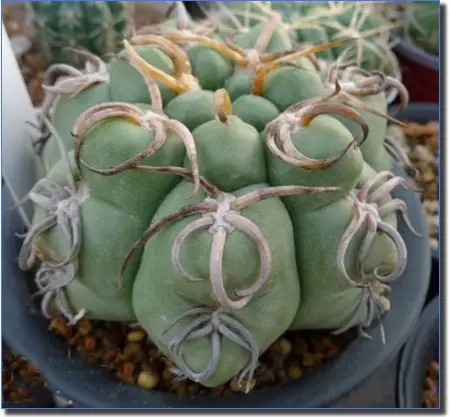
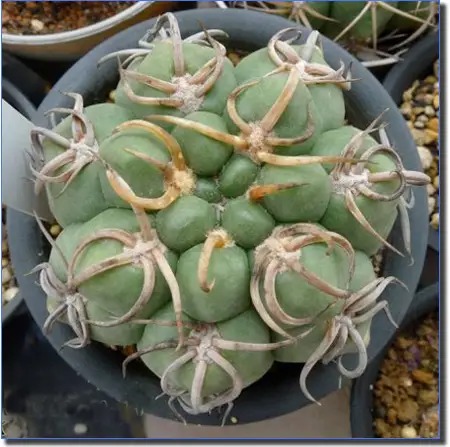 ================================================================
================================================================Flower Name: Gymnocalycium buenekeri
Shengwang is spherical or oblate. There are 3 to 6 edges, shallow horizontal grooves between the areoles, and the thorns are of different lengths. It likes sunlight, the flowers are terminal, the receptacle is attached with large scales, but it is hairless and thorny. Shengwang flowers are pink or light pink. When flowering, at least half of the sphere of the plant must be exposed to strong light for a day, so that the buds are easier to bloom. Because this genus likes to bloom, many breeders will hybridize. In China, the genus Gymnocalyx is basically a hybrid variety, with very few pure varieties. Even in the place of origin, there are many hybrid varieties. With many flowers, insects pollinate in a disorderly manner, so the appearance will be very similar and it is not very easy to distinguish.
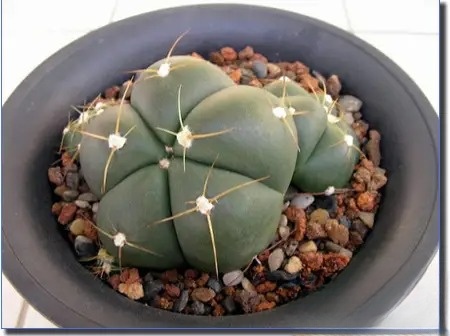
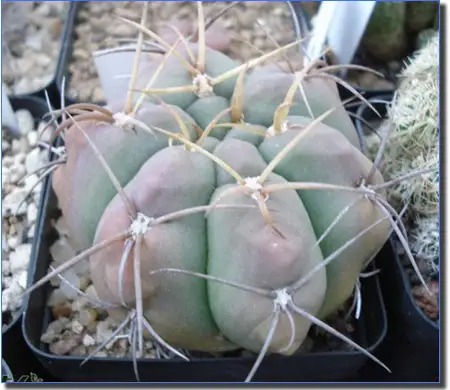
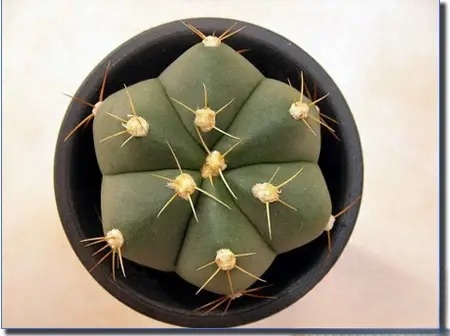 ================================================================
================================================================Flower name: Shengwangjin
A plant of the genus Gymnocalyx in the Cactaceae family. It is a variegated variety of the Holy King Ball. It has few and full ridges, a shiny epidermis, and is light yellow throughout.
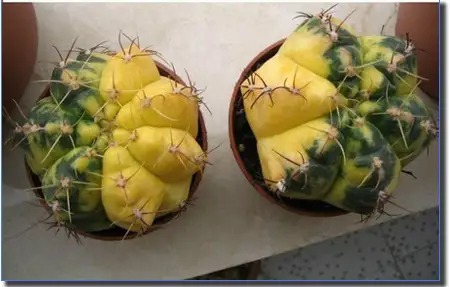 ================================================================
================================================================Flower name: Tianci Jade
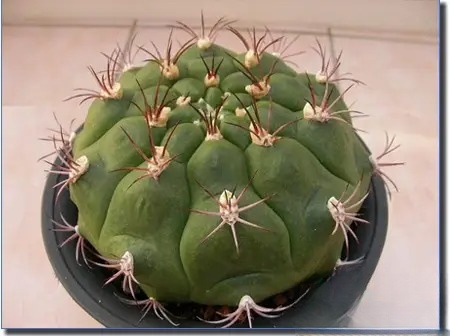
 ================================================================
================================================================Flower name: Libra
Origin: Argentina. Morphology: Solitary plant, flattened to spherical, old plants short cylindrical. Ball diameter 15-17 cm, body color grayish green. With 11-13 low warty ridges. Brown peripheral spines 5-7; 1 central spine. Flowers: Light peach bell-shaped flowers at the top in late spring and early summer, 4-5 cm in diameter.
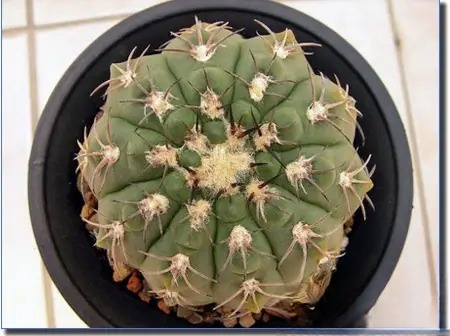
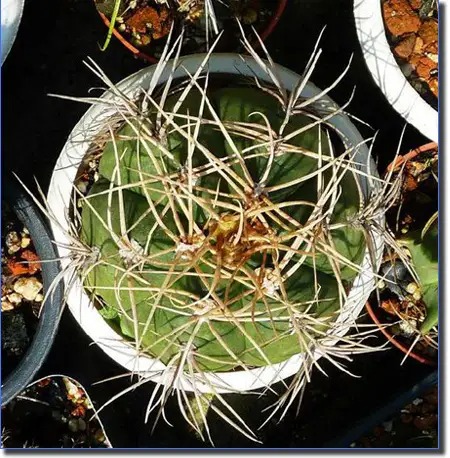
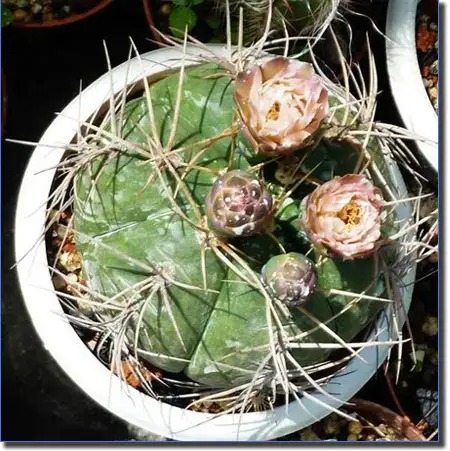 ================================================================
================================================================Flower name: Uranus Globe
Origin: Argentina. Appearance: The plant is initially solitary, and then the base easily sprouts balls. The ball diameter is 10-12 cm, and the body color is gray-green. It has 5-8 round warty and thick ridges. There are 5-7 yellow radial thorns. Flowers: Pure white funnel-shaped flowers withered in late spring, with a flower diameter of 7-8 cm .
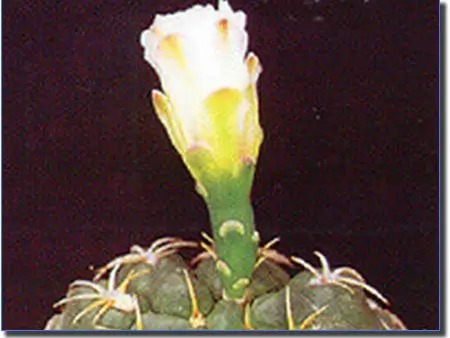 ================================================================
================================================================Flower name: Tianwangjin
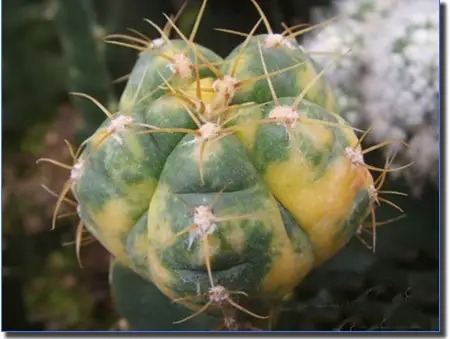 ================================================================
================================================================
Flower name: Tian Zi Yu
Origin: It is a variant of Tian Ci Yu, native to Bolivia and northern Argentina. Appearance: The plant is solitary, oblate to spherical. The ball diameter is 17-20 cm, and the body color is purple-green. Flowers: In spring, pink bell-shaped flowers are produced at the top, with a flower diameter of 3.5-4 cm .
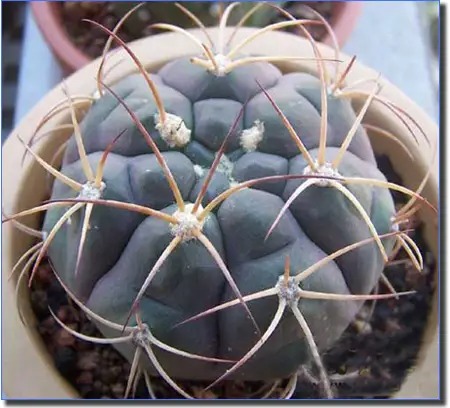
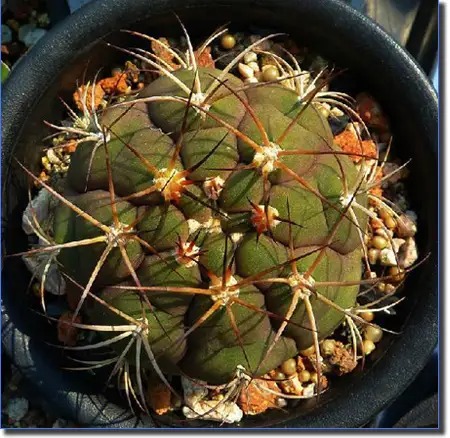
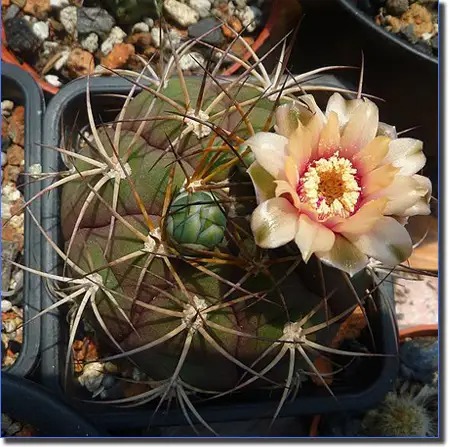
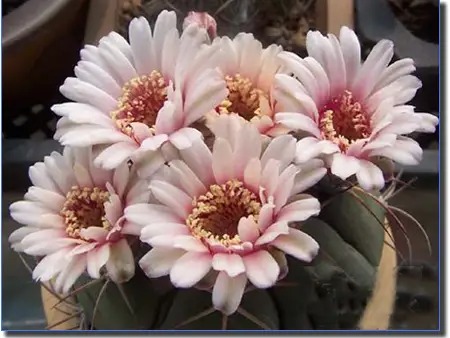 ================================================================
================================================================Flower Name: New World (Gymnocalycium saglionis (Cels) Britton & Rose)
Origin: Andes in northern Argentina and southern Bolivia. Appearance: Solitary plant, oblate to spherical, 25-30 cm in diameter, dark green, with 20-30 conical ridges. 8-10 slightly curved conical thorns, 1-3 central thorns; new thorns are purple-red-brown, old thorns are gray. Flowers: Pink bell-shaped flowers bloom on the areoles near the center of the dome in spring, with a diameter of 3.5-4 cm. There are two types of Xintiandi: 1. The darker thorns are called black thorn Xintiandi. 2. The lighter thorns are called red thorn Xintiandi.
================================================================
Flower Name: Gymnocalycium marquezii Card
Flat ball, 4cm high, 10cm in diameter, grass green epidermis; areoles have white felt hairs, fine cone-shaped, gray at the bottom, reddish brown at the top. Flowers are lightly shaped (like champagne glasses), light rose red, with brown stripes in the middle of the petals. The most rare thing about it is that it grows well under artificial cultivation, and it is a species with a wide adaptability.
================================================================
Flower name: Yingmingjin
A plant of the genus Gymnocalyx in the Cactaceae family. It is a variegated variety of the Yingming Jade. It is an oblate ball with all the edges broken down by nodules and strong needle-like thorns. It is yellow-green in color.
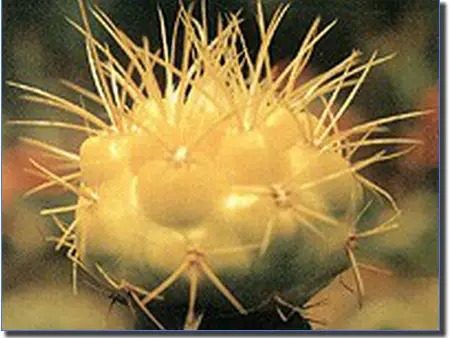 ================================================================
================================================================Flower Name: Waltz
A plant of the genus Gymnocalyx in the Cactaceae family. Native to Paraguay, it is a variant of the genus Ryuun. It is an oblate ball with eight neat ridges and long, slightly curved spines. The flowers are white to pink.
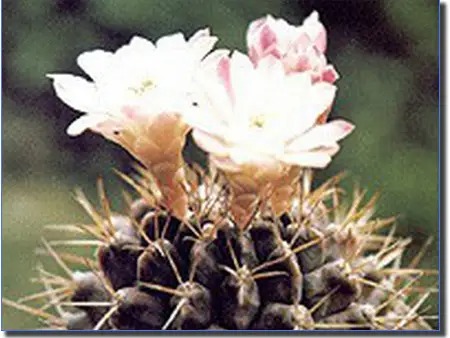 ================================================================
================================================================Name of flower: Ryokan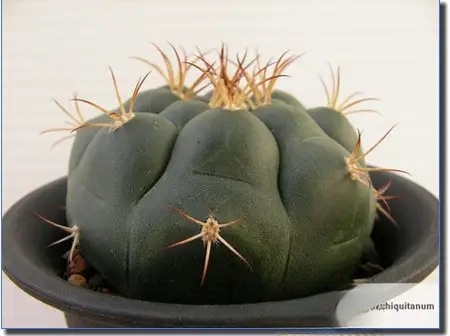 =====================================================================
===================================================================== Flower Name: Gymnocalycium damsii
Also known as: Serpentine Jade, Purple-backed Imperial Crown, Small-wart Imperial Crown. The plant is a small cactus variety, shaped like a top, and looks quite like an imperial crown. It has 8-10 ridges, divided into blunt triangles, green on the top, purple on the back, symmetrical and neat, with sharp contrast, like the pattern on a snake. The thorns grow on the tips of the horns, with 6-8 gray-white fine thorns. It blooms in spring and summer. The information says that if the environment is suitable, it will bloom all year round, but Feng Kite only sees flowers about twice a year. The flowers of the beautiful snake ball are terminal, white or pink, like jade, often with brown stripes or dark pink midribs, the flowers have one pistil, white; multiple stamens, grass green. Cross-pollination.
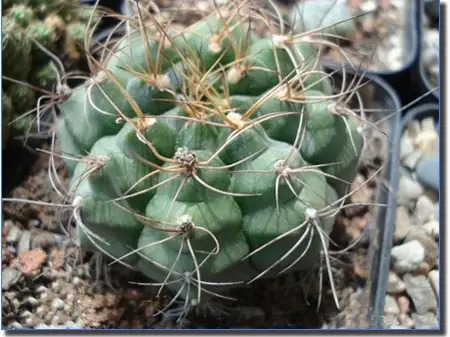
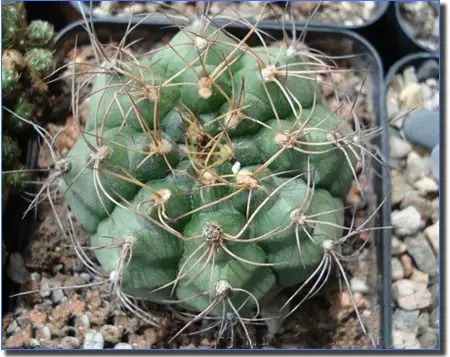
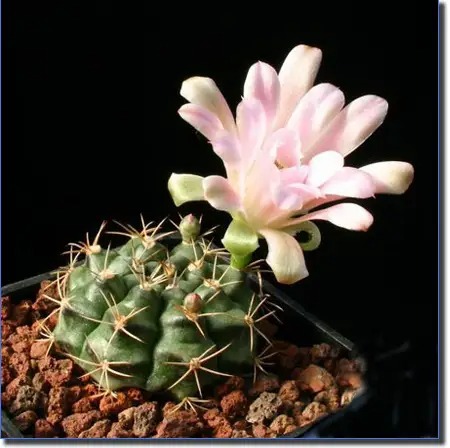
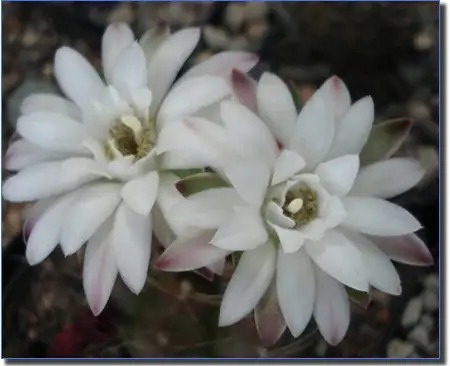 ================================================================
================================================================Flower name : Gymnocalycium eurypleurum
Yongjiangwan is spherical or oblate. It has few ridges, round ridges, horizontal grooves or bands of different colors between the areoles, and thorns of different lengths. It likes sunlight, and the flowers are terminal. The receptacle is attached with large scales, but without hair and thorns. Yongjiangwan flowers are pink and white, and yellow flowers are relatively rare. When flowering, at least half of the sphere of the plant must be exposed to strong light for a day, so that the buds are easier to bloom.
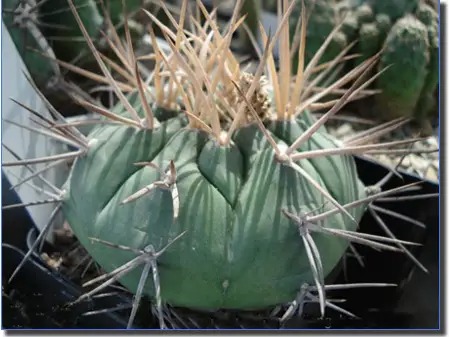
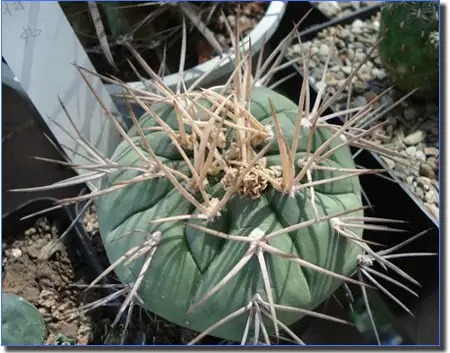
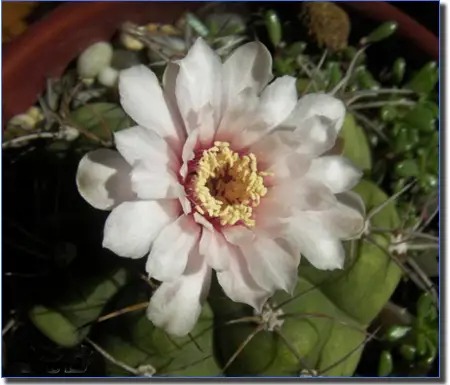 ================================================================
================================================================Flower name: Quci Yongjiang Wan
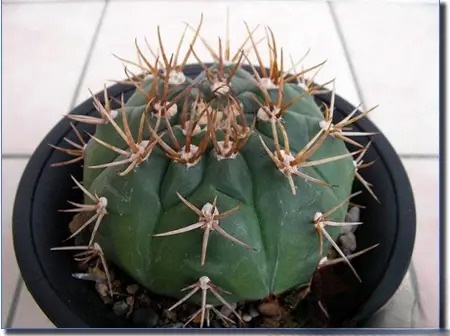 ================================================================
================================================================Flower name: Long-thorned Brave General
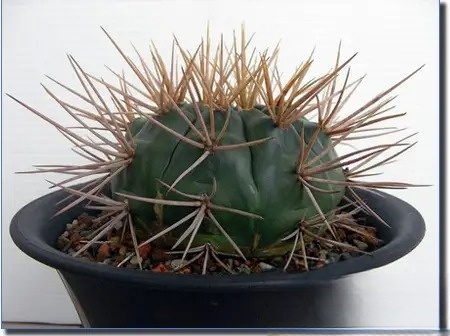 ================================================================
================================================================Flower name: Yongjiangwanjin
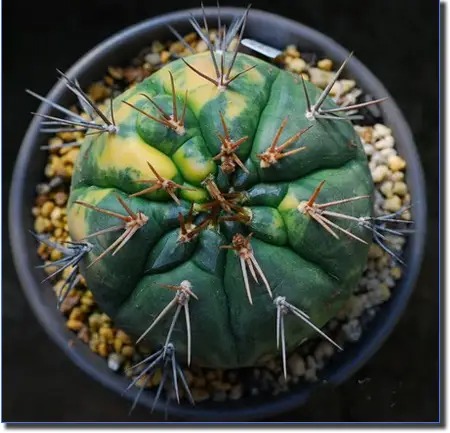 ================================================================
================================================================
Flower name: Guardian Golden Dragon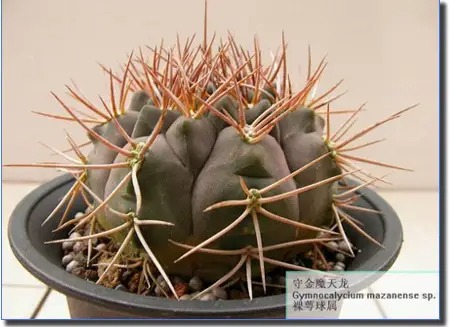 ================================================================
================================================================Flower name: Spring and Autumn Pot ( Gymnocalycium ochoterenae subsp. )
Origin: Southern Argentina. Spring and Autumn Pot looks similar to a thorn. The specific difference depends on experience, because there are too many horticultural hybrid varieties and there is a lot of controversy. Spring and Autumn Pot is a perennial succulent plant of the Cactaceae family. It is flat spherical, 4 to 8 cm in diameter, gray-green to dark green, which is related to the intensity of sunlight. The mature sphere basically has no daughter balls. Spring and Autumn Pot has 1-3 thorns, new thorns are black, and old thorns are grayish white. The flower tube of Spring and Autumn Pot is funnel-shaped, the flowers are beige, cross-pollination, flowering in summer, the fruits are slender, spindle-shaped, dark green, and the seeds are dark brown. When Spring and Autumn Pot blooms, at least half of the sphere of the plant must be exposed to strong light for a day, so that the flower buds are easier to bloom. Spring and Autumn Pot is easy to drop flower buds if it is not well cared for.
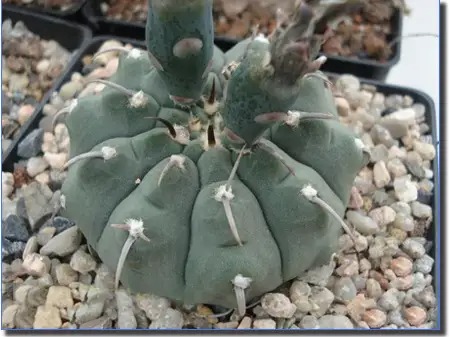
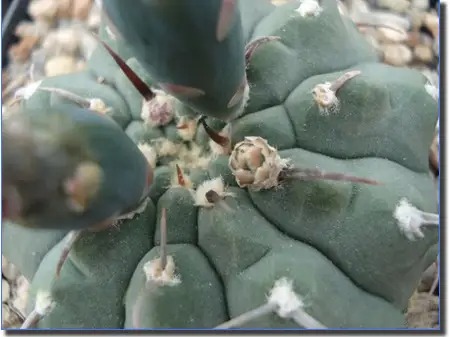 ================================================================
================================================================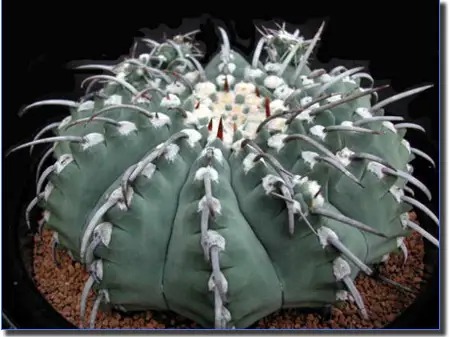
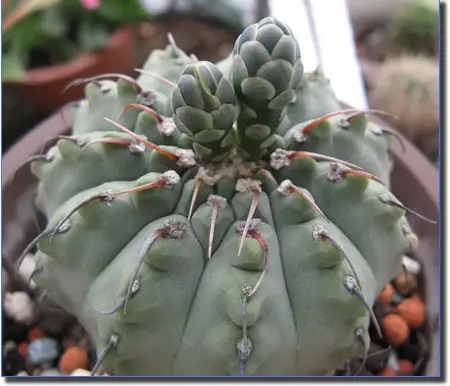 ================================================================
================================================================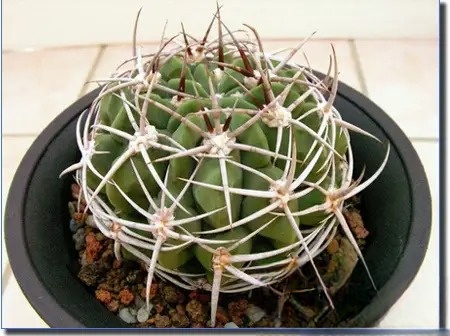 ================================================================
================================================================Flower name: Jade
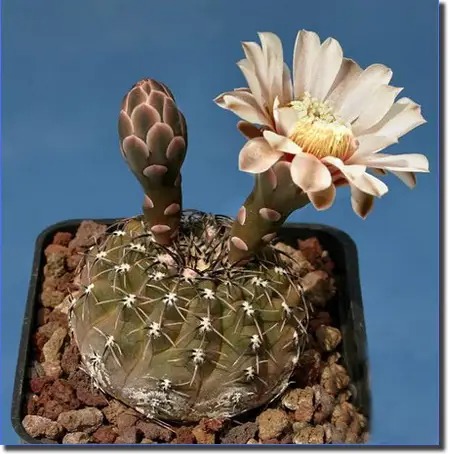 ================================================================
================================================================Flower name: Tenshumaru
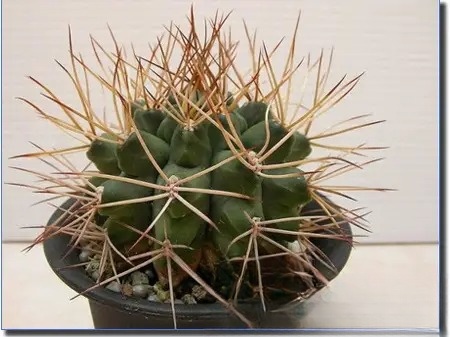 ================================================================
================================================================Flower name: Manjumaru
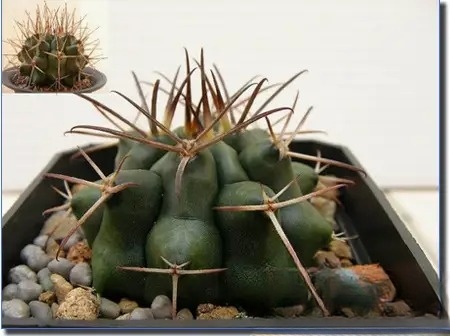 ================================================================
================================================================Flower name: Jinbi
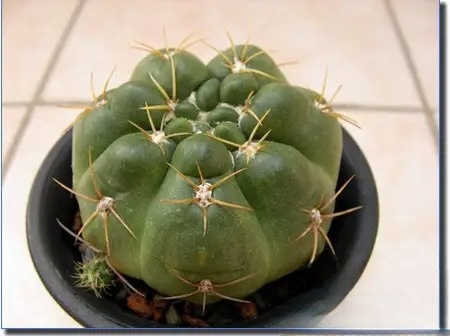 ================================================================
================================================================Flower name: Guangyunyu
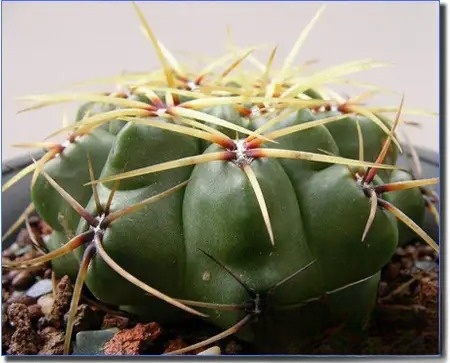 ================================================================
================================================================Flower name: Red Plum Palace
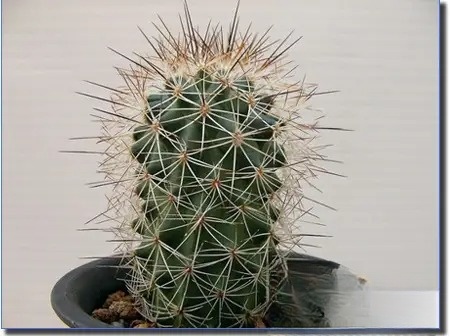 ================================================================
================================================================
Flower name: Wave Dragon================================================================
Flower name: Sword Demon Jade
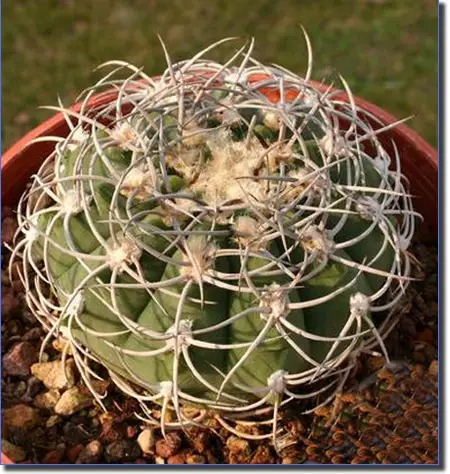 ================================================================
================================================================Flower name: Wu Biyu
================================================================
Flower name: Mukun Maru
================================================================
Flower Name: Purple Crown Jade (Lagen)
================================================================
Flower Name: Jadeite ( Gymnocalycium ambatoense )
Jadeite is a perennial succulent plant of the Cactaceae family. The plant is spherical, with a diameter of 4 to 8 cm, gray-green to dark green, which is related to the intensity of sunlight. Mature spheres basically have no daughter balls. Jadeite has 4-7 thorns, new thorns are yellow-brown, old thorns are gray-black or black-yellow, there is no middle thorn, the warts are obvious, and the areolas are micro-hairy. The flower tube of Jadeite is funnel-shaped, the flowers are white or off-white, cross-pollination, flowering in summer, the fruits are slender, spindle-shaped, dark green, and the seeds are dark brown. When Jadeite blooms, at least half of the sphere of the plant must be exposed to strong light for a day, so that the buds are easier to bloom. If Jadeite is not well cared for, it is very easy to drop the buds. 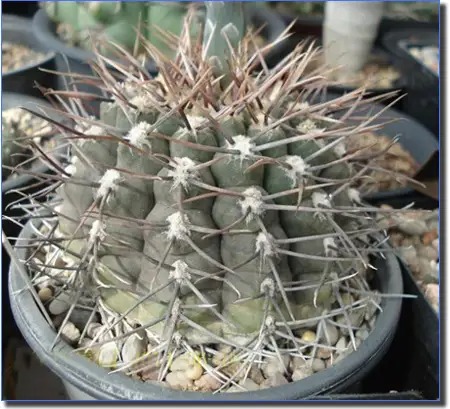 ====================================================================
==================================================================== Flower name: Snake Dragon Ball
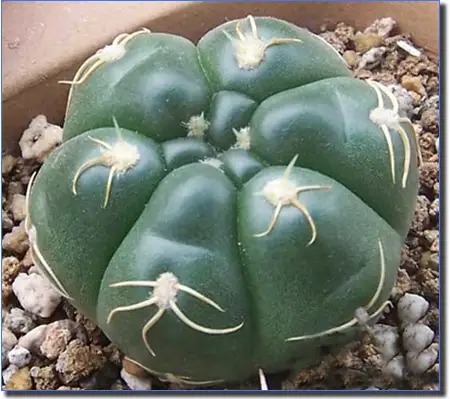
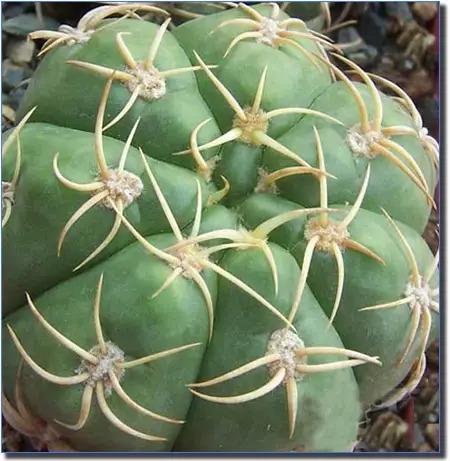 ======================================================================= Flower Name: Snake Dragon Brocade
======================================================================= Flower Name: Snake Dragon Brocade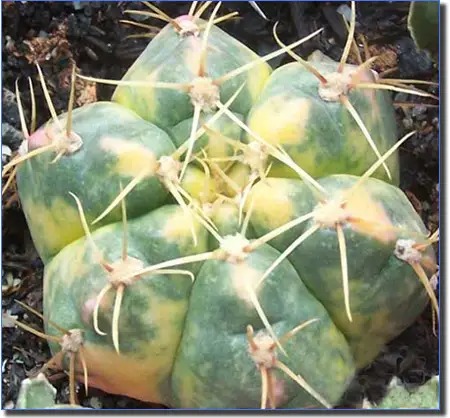 =====================================================================
=====================================================================Flower Name: Fireweed ( Gymnocalycium carminanthum )
The sphere of the fire dong ball is relatively flat, the plant epidermis is grass green, with about 11-13 ridges, and basically 5 thorns, 1.5 cm long, sometimes one central thorn, generally no central thorn. The flowers are wine red, about 4-6 cm in diameter, blooming in summer, cross-pollination, the fire dong ball variety is not very resistant to exposure, water it when it is completely dry during the growth period, try to use less water for mature plants, otherwise it may also grow too tall, and it will grow taller if there is not enough light. Propagation is mainly by sowing, rarely grafting, but the growth of sowing is not too fast, you need to be patient.
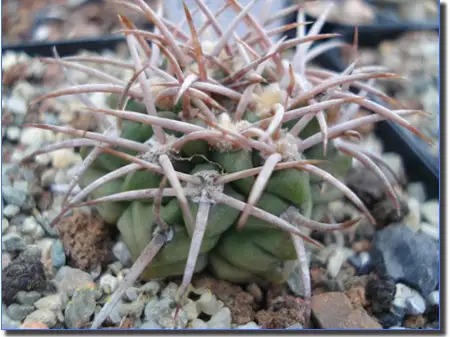
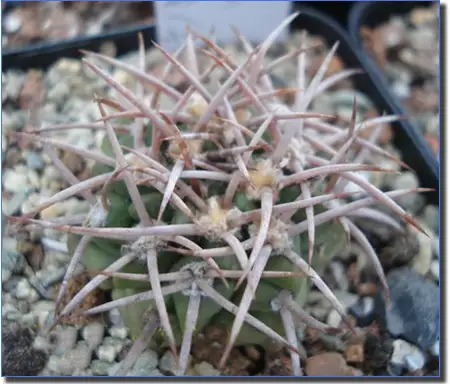 ================================================================
================================================================
Flower Name: Dinosaur
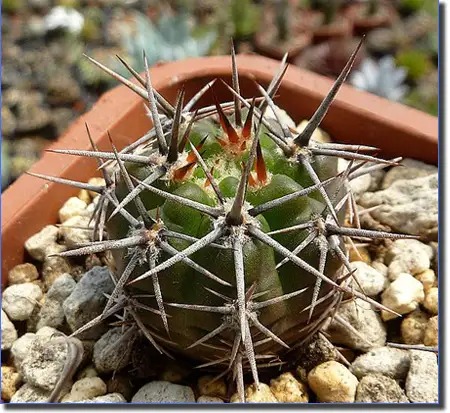
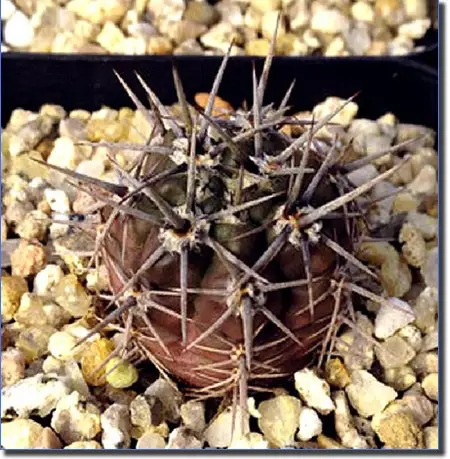
================================================================
Flower name: Pure scarlet jade
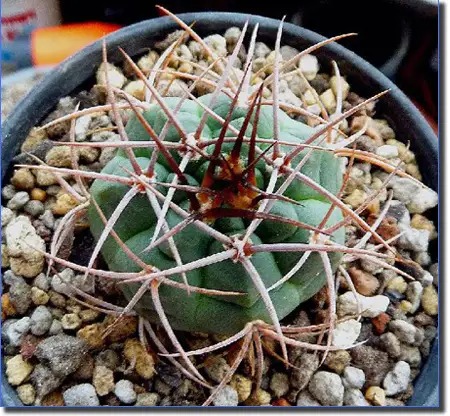
================================================================
Flower name: Blue and white
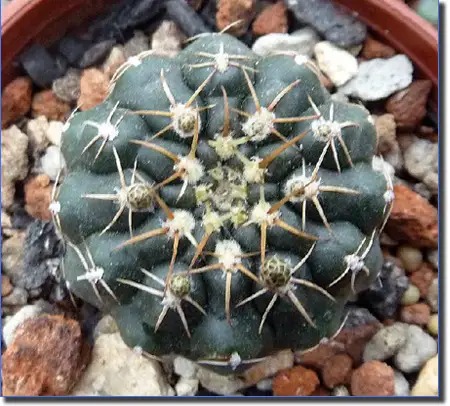 ================================================================
================================================================
Flower Name: Long Thorn
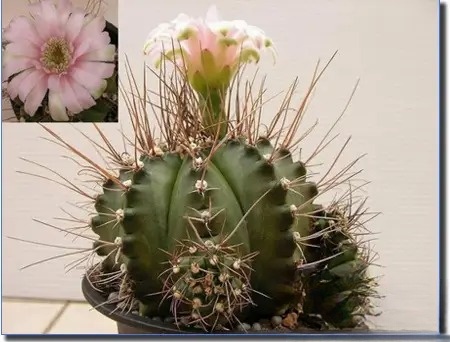 ========================================================================
========================================================================
Cactaceae Plants - (34) Echinops
The plant is large, spherical or tubular. With sharp edges. The thorns are hard and straight, often flat. The thorns are bright in color. The areoles are covered with felt hairs, especially on the top of the ball. The bell-shaped flowers are terminal, yellow or pink. The fruit is densely hairy. There are not many species in this genus, but they are all classic species, which have always been valued by various botanical gardens and enthusiasts. It is produced in Mexico and the southwestern United States.================================================================
Flower Name: Golden Amber (Echinocactus grusonii Hildm . )
Alias: Ivory Ball, a plant of the genus Echinops in the Cactaceae family. Native to Mexico, it is the most famous representative species of spherical cacti. It is flat to round. It has many neat ridges, with large areoles arranged neatly on the ridges. It has 8-10 golden radial spines, 3-4 hard and slightly curved golden middle spines, and yellow flowers on the top.
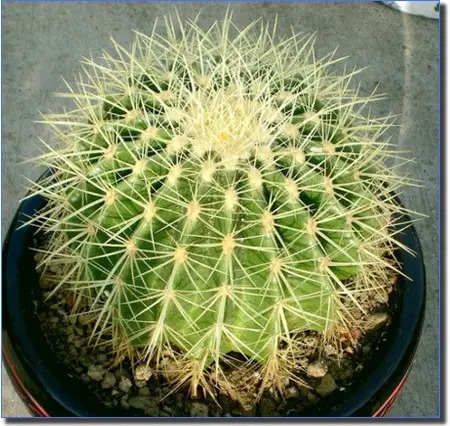
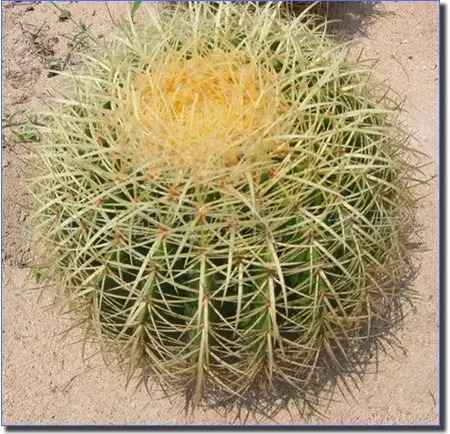
================================================================
Flower name: White-thorn Golden Amber (Echinocactus grusonii var. albispinus)
Origin: A white-thorn variant of Golden Amber. Appearance: The whole body is covered with white translucent hard thorns on the emerald green bead, and the top of the sphere is densely covered with light yellow fluff. The whole sphere is clean and flawless, more precious than the original species. Flowers: Golden yellow bell-shaped flowers are produced on the top from spring to autumn, with a flower diameter of 3-4 cm. 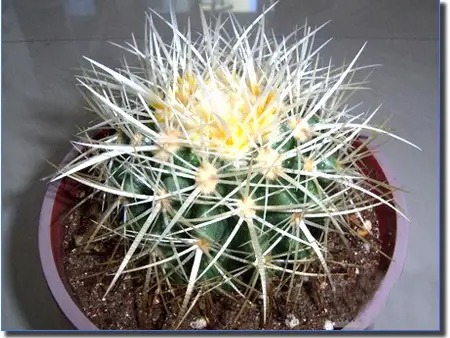
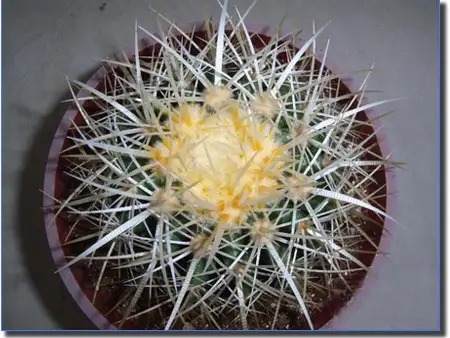
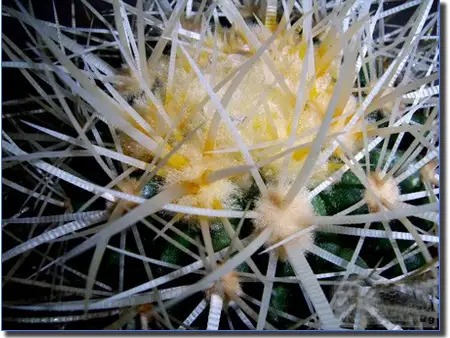 ================================================================
================================================================
Flower name: Echinocactus grusonii var. intentextus,
a curved thorn variant of Echinocactus grusonii. Appearance: The sphere is covered with golden hard and irregularly curved thorns. The middle thorn is wider and more distinctive than the original species. It is more valuable than the original species and is one of the varieties that enthusiasts are keen to pursue. Flowers: Golden bell-shaped flowers are produced at the top from spring to autumn, with a flower diameter of 3-4 cm. 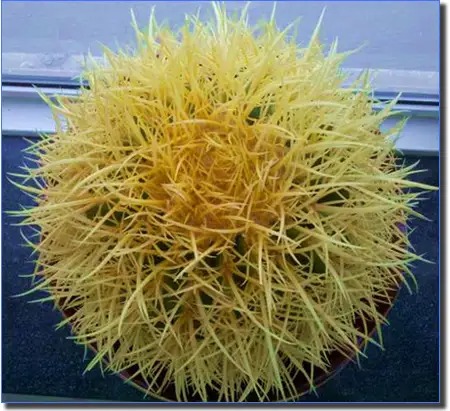
=================================================================
Flower Name: Naked Amber [Short-spined Golden Amber, Thornless Golden Amber] (Echinocactus grusonii var. inermis)
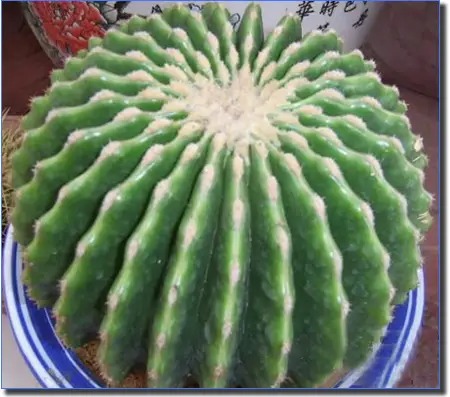
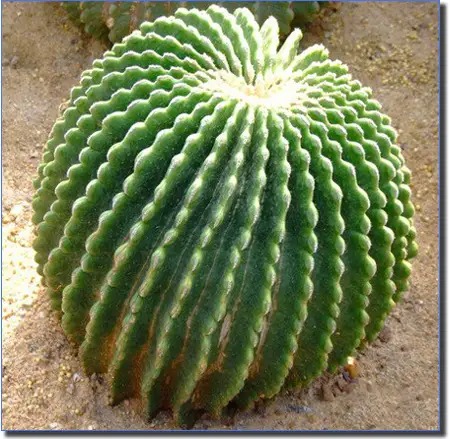
================================================================
Flower Name: Echinocactus grusonii var. inermis f. cristata
================================================================
Flower name: Echinops sutchuenensis
================================================================
Flower name: Echinocactus grusonii var. intermedius
The short white thorn golden barrel cactus is a variant of golden barrel cactus, a perennial succulent plant. The ball is round and green, solitary or in clusters, with a height diameter of about 15cm. The top of the ball is densely covered with white and yellow wool. There are 12 to 16 obvious ridges. The areoles are densely covered with hard thorns, white and yellow, with 8-10 thorns, 1-3 middle thorns, which are thicker, slightly curved, and 0.8-1cm long. It blooms from June to October, and the flowers grow in the wool clusters on the top of the ball. They are bell-shaped, yellow, and the flower tube is covered with sharp scales.
================================================================
Flower name: Golden Amber
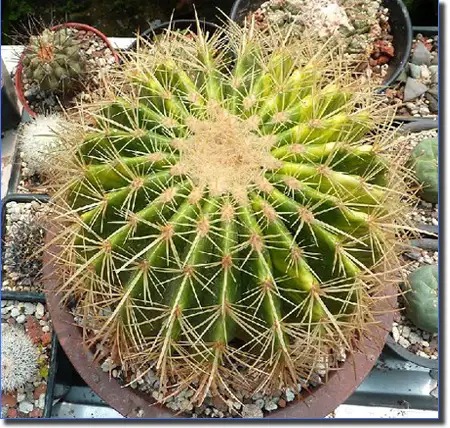
================================================================
Flower name: Golden Amber (Echinocactus grusonii f. crist)
, alias: Ivory Ball, a horticultural variety.
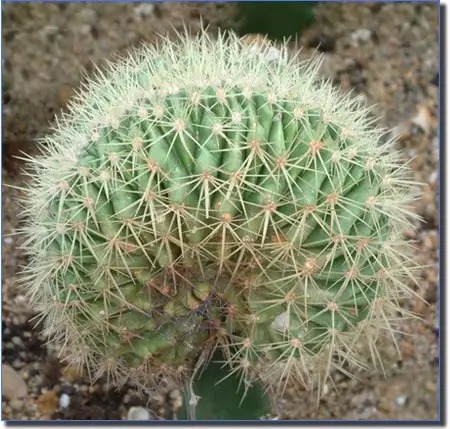
================================================================
Flower name: Lingbo
================================================================
Flower name: Long-thorn Lingbo
================================================================
Flower name: Short-spined Lingbo
================================================================
Flower name: Cuipingwan
========================================================
Flower name: Spring Thunder
Origin: Mexico. Appearance: oblate to spherical, old plants are cylindrical, bright green. Ridges with 20-25 tubercles. 6 peripheral thorns, 4 middle thorns, 1 longer in the center; new thorns are reddish brown, old thorns are brown. Flowers: Yellow bell-shaped flowers are produced at the top in spring and summer, with a flower diameter of 4-5 cm. 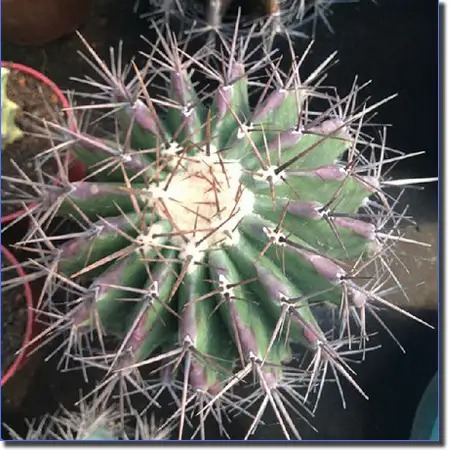
================================================================
Flower name: Kao Maru
================================================================
Flower name: Mouqingqiu
================================================================
Flower name: Shenlong Jade
================================================================
Flower Name : Echinocactus horizonthalonius
Taipingwan is the smallest in the genus Echinops, but it is relatively large compared to other cacti. The plant's sphere is mostly gray-green, with 7-13 ridges, and the brown spines are arranged radially. They are relatively long, with rings on the spines. There are 7 side spines, and the middle spine is slightly thicker than the side spines. The middle spine and the side spines are about the same length. Taipingwan has funnel-shaped flowers at the top, blooms in spring, and the flowers are pink, fragrant, and relatively large.
=================================================================
Flower Name: Blackthorn Taipingwan ( Echinocactus horizonthalonius var. )
Blackthorn Taipingwan is a variant of Taipingwan. The plant's sphere is mostly gray-green, with 7-10 ribs, gray-brown thorns arranged radially, long, with ring marks on the thorns, 4 side thorns, the upper and lower middle thorns are slightly thicker than the side thorns, dark brown, and slightly longer than the side thorns. The top thorns are covered with yellow fluff. Blackthorn Taipingwan has funnel-shaped flowers at the top, blooming in spring and summer, with pink flowers and large flowers. Cross-pollination.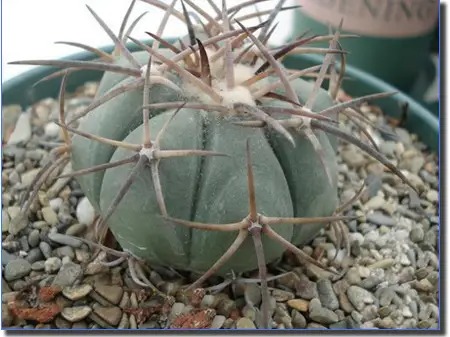
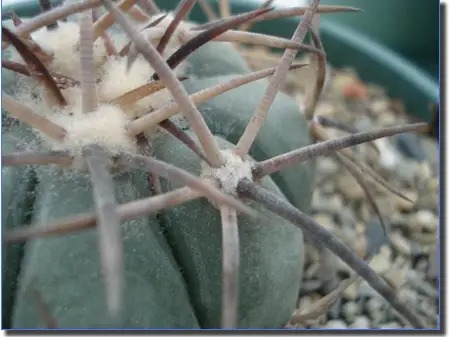
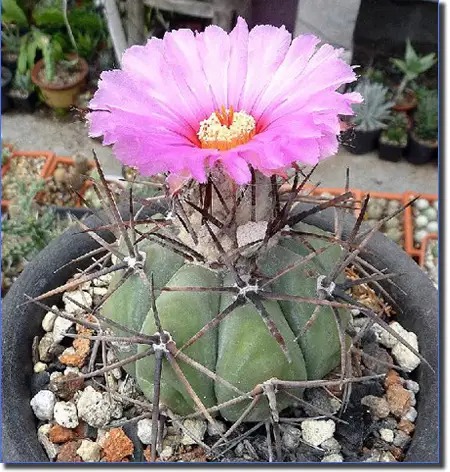
================================================================
Flower name: Rock
================================================================
Flower name: Spider Ball
================================================================
Flower name: Big Dragon Crown
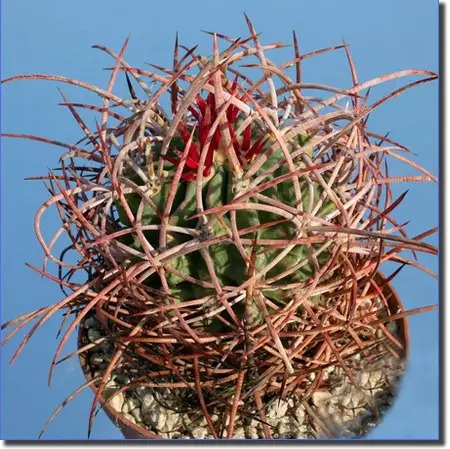
================================================================
Flower Name: Echinocactus horizonthalonius
Hongjianwan is a horticultural variety of Xiaopingwan. The plant ball is celadon-colored, slightly covered with white powder, 7-10 ribs, reddish brown or yellowish brown spines arranged radially, slightly long, with ring marks on the spines, 4-5 side spines, the upper and lower spines are slightly thicker and longer than the horizontal spines, and the spines of Hongjianwan are much shorter than those of Heishi Taipingwan. The top spines are also covered with yellow villi. Hongjianwan has funnel-shaped flowers at the top, blooming in spring and summer, with pink flowers and large flowers. Cross-pollination.
================================================================
Flower name: Echinocactus platyacanthus
Native to central and northern Mexico. The ball is 50 cm in size, with a blue-green to gray-green skin, 21-24 straight and neat ridges. The areoles are longitudinally oblong, almost one after another, with 4 small thorns around, 3-4 middle thorns, staggered in a cross, very strong, and yellow-brown. The flowers bloom from the top wool layer, in large numbers, funnel-shaped, 3.5 cm in size, yellow with a silky luster. It can only bloom fully in full sunlight. The fruit is oblong or nearly clavate, 3-5 cm long. This species has a large ball with bright skin color, especially when the thorns are red and the ball is blue when it is young, which is very attractive.
Gardening
Flower Gardening


 ================================================================
================================================================ ================================================================
================================================================ ================================================================
================================================================

 ================================================================
================================================================
 ================================================================
================================================================ ================================================================
================================================================ ====================================================================
====================================================================  ================================================================
================================================================
 ================================================================
================================================================ ================================================================
================================================================ ================================================================
================================================================ ================================================================
================================================================ ================================================================
================================================================ ================================================================
================================================================

 ================================================================
================================================================ ================================================================
================================================================ ================================================================
================================================================ ================================================================
================================================================

 ================================================================
================================================================ ================================================================
================================================================
 ================================================================
================================================================

 ================================================================
================================================================
 ================================================================
================================================================


 ================================================================
================================================================
 ================================================================
================================================================

 ================================================================
================================================================ ================================================================
================================================================
 ================================================================
================================================================

 ================================================================
================================================================ ================================================================
================================================================ ================================================================
================================================================


 ================================================================
================================================================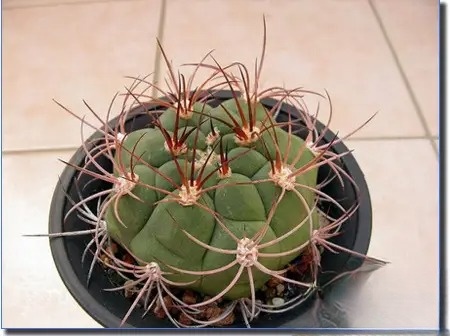
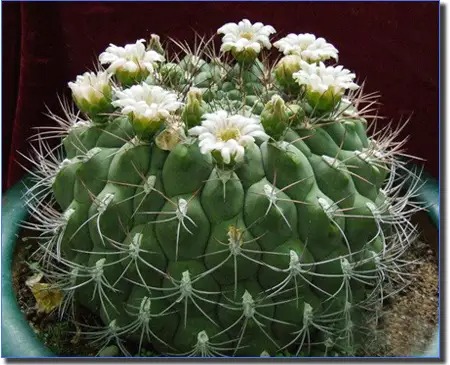
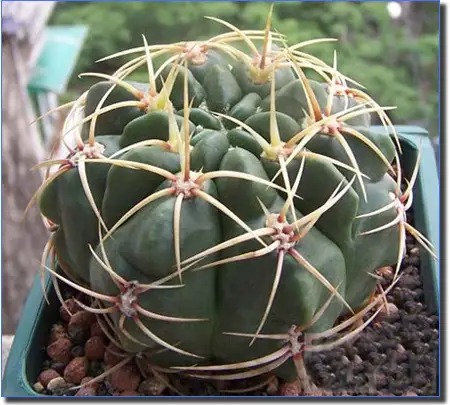
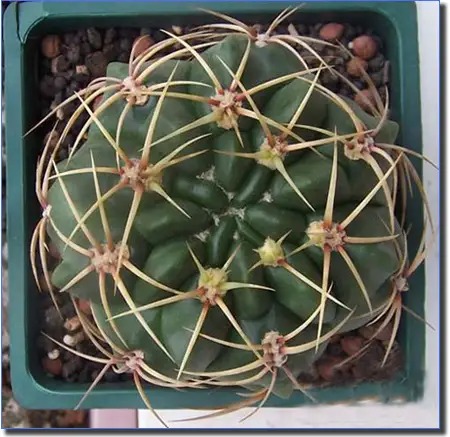
 ================================================================
================================================================ ================================================================
================================================================ =====================================================================
=====================================================================


 ================================================================
================================================================

 ================================================================
================================================================ ================================================================
================================================================ ================================================================
================================================================ ================================================================
================================================================ ================================================================
================================================================
 ================================================================
================================================================
 ================================================================
================================================================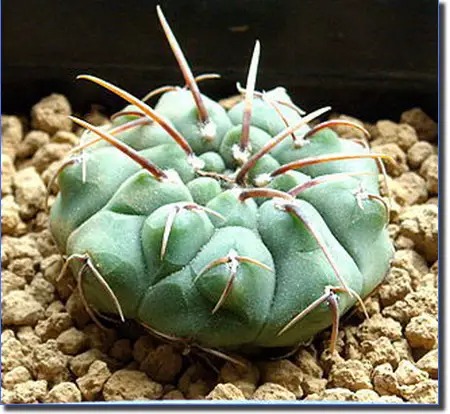
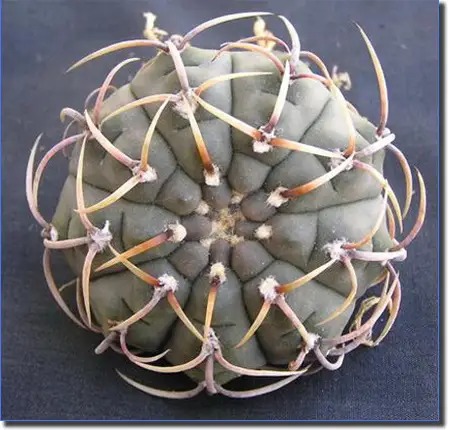
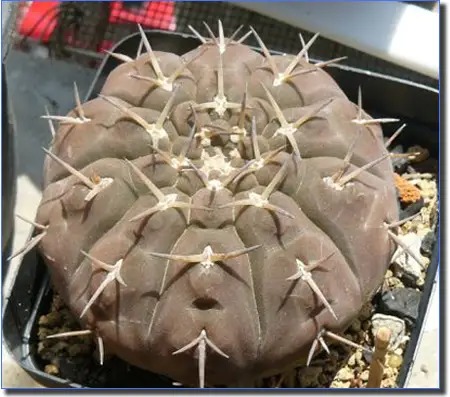
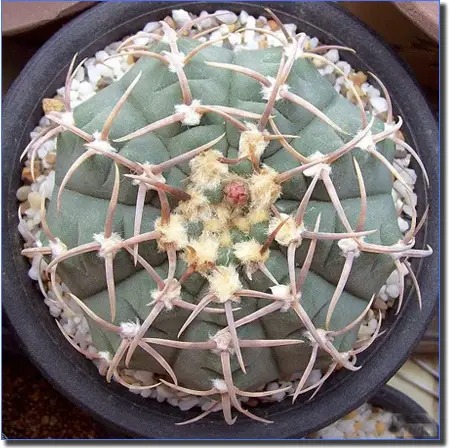 ================================================================
================================================================ ================================================================
================================================================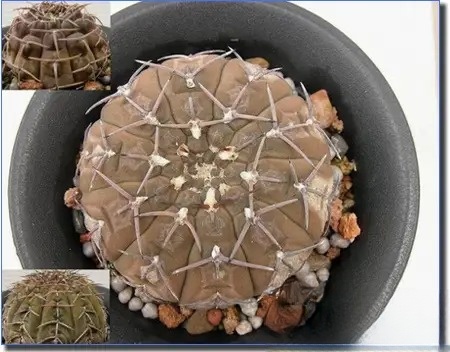
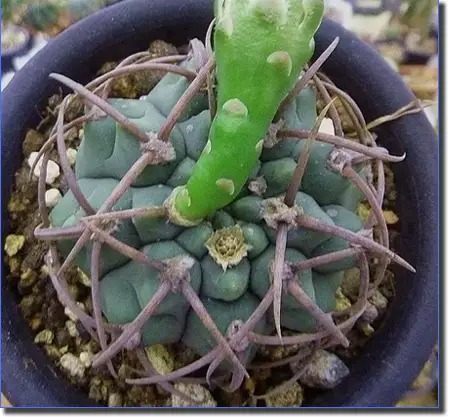
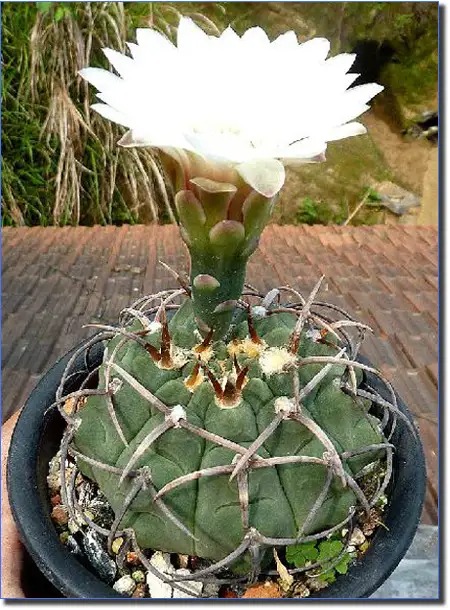 ================================================================
================================================================ ================================================================
================================================================ ================================================================
================================================================ ================================================================
================================================================ ================================================================
================================================================ ================================================================
================================================================ ================================================================
================================================================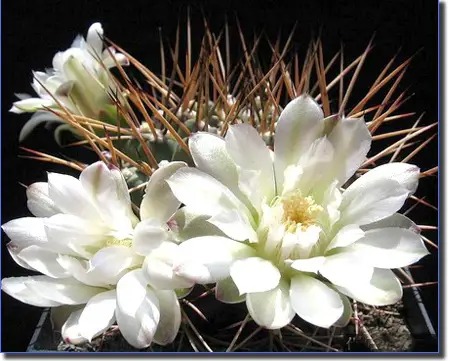
 ================================================================
================================================================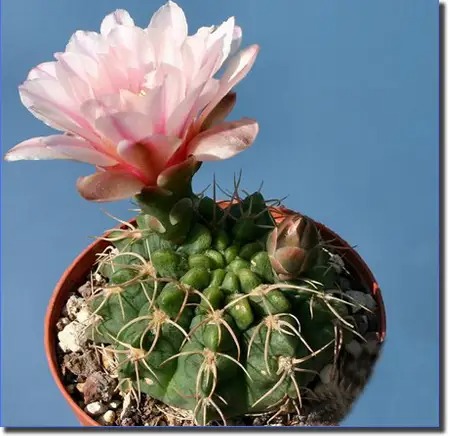
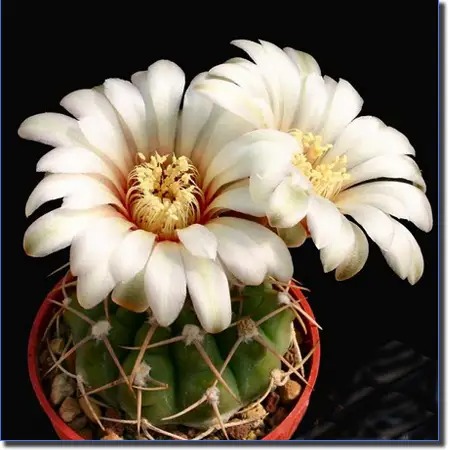
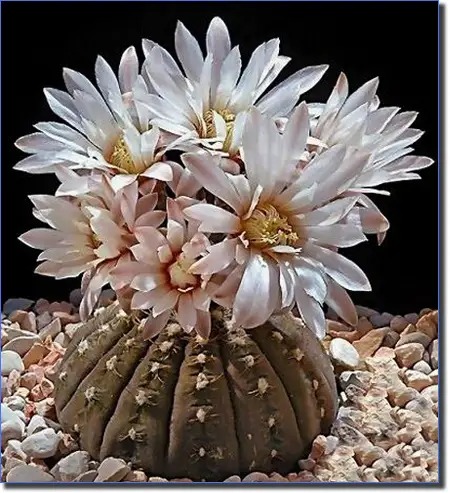
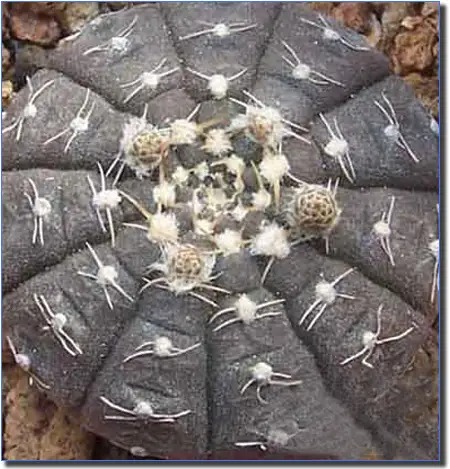
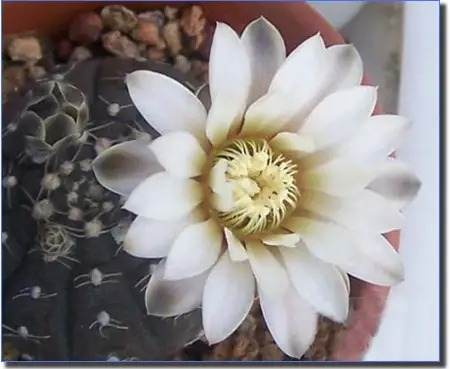 ================================================================
================================================================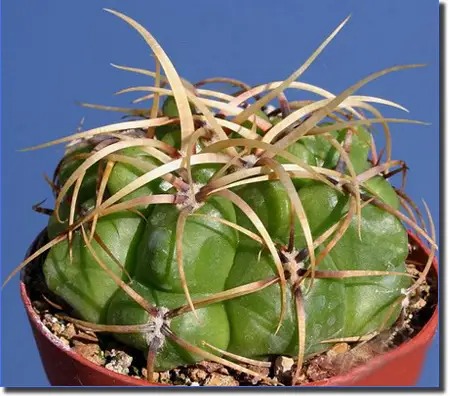
 ====================================================================
====================================================================
 =======================================================================
=======================================================================  =====================================================================
=====================================================================
 ================================================================
================================================================


 ================================================================
================================================================ ========================================================================
========================================================================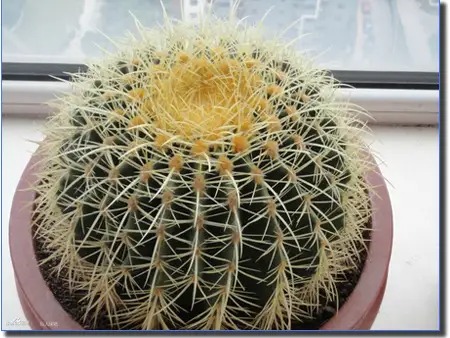




 ================================================================
================================================================
